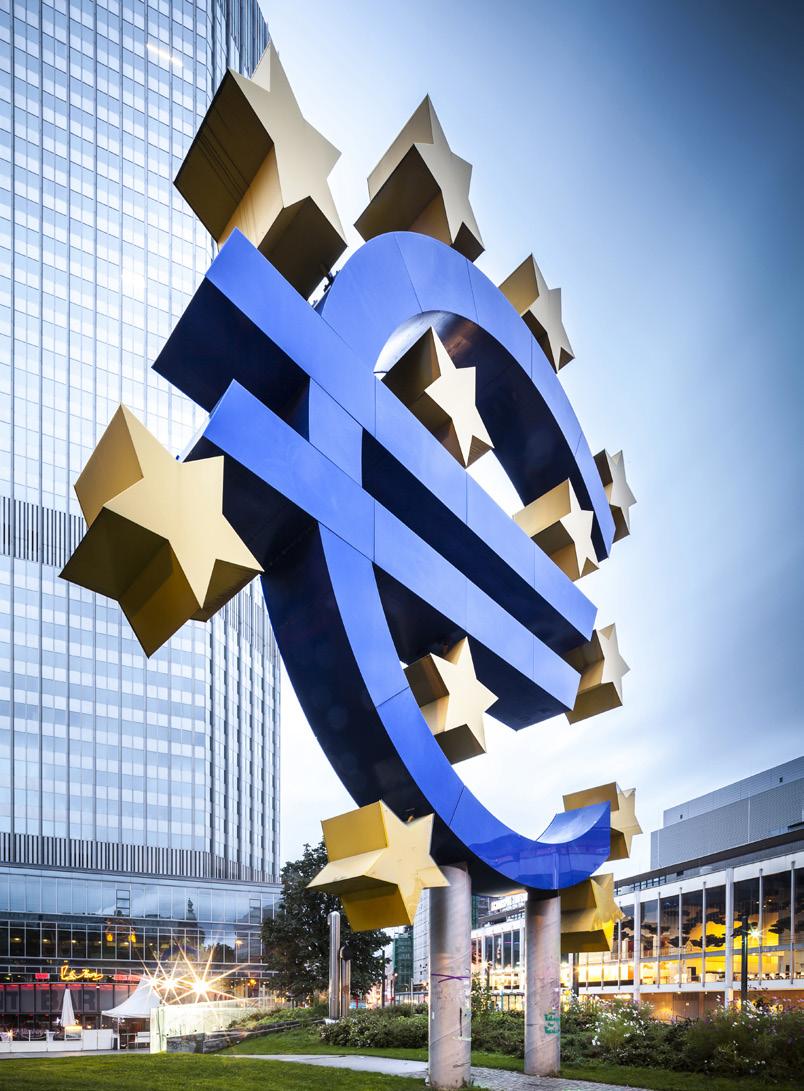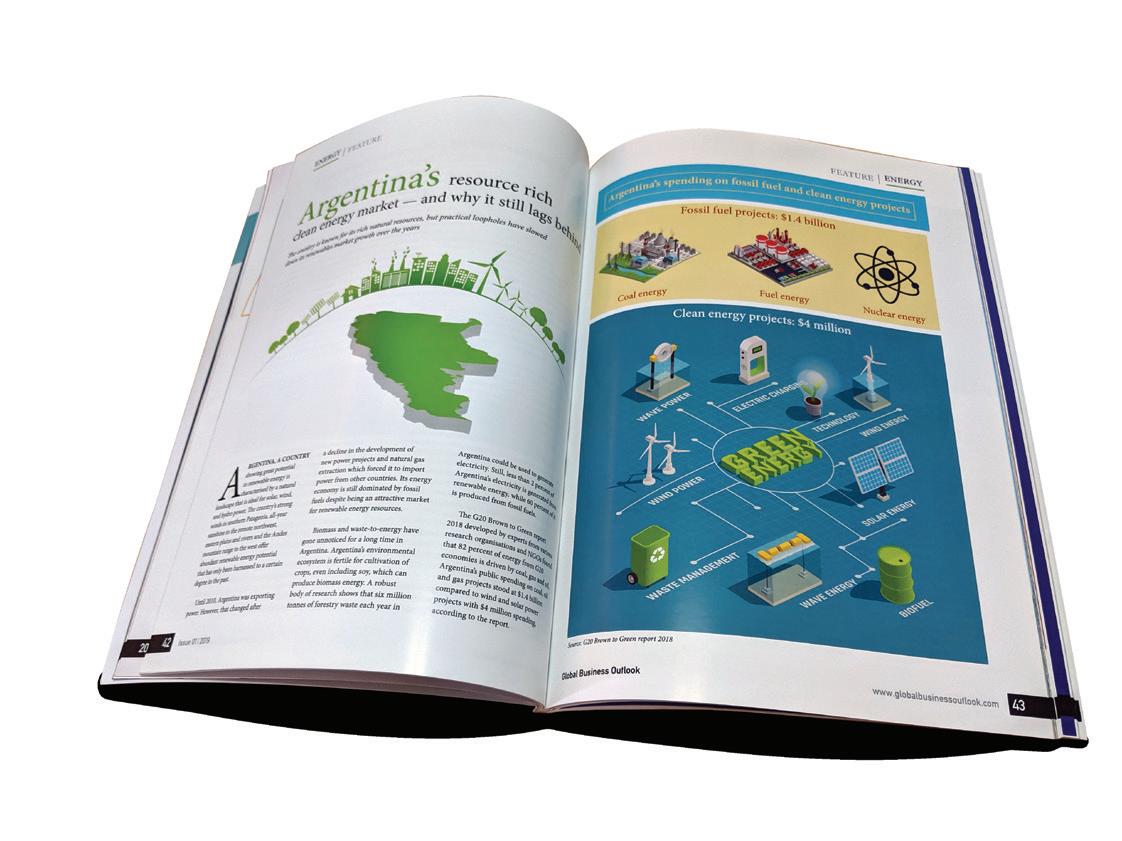




The year 2023 has not been a kind one for the banking sector. We have three prominent American lending institutions, First Republic, Silicon Valley Bank and Signature Bank, all falling one by one, like a pack of cards. To make the matter worse, on March 19, global banking major Credit Suisse had to be rescued from going extinct by its Swiss rival UBS in a rushed deal. The bond category called AT1 has come under the focus now as UBS' takeover has wiped out some $17 billion worth of bonds of Credit Suisse.
Talking about the banking sector, COVID has set the financial sector on the path of digitisation and banks have been introducing fintech elements like instant and personalised customer services, apart from investing in AI and data analytics, to streamline their decision-making. The year 2023 will see this transformation accelerating further.
Shifting our attention away from the banking sector, let’s talk about the United Kingdom's mortgage market. The European giant, whose inflation figure now stands at 10.1%, is well far from the Bank of England's target of 2%, so expect the institution to keep on tightening its monetary policy. As per the experts, the country's mortgage market will feel the heat, as two million British homeowners are having variable rate deals, whose monthly interest rates will follow a higher trajectory every time BoE tightens its monetary policy.
While this April-June 2023 edition of the magazine revolves around these issues, its cover story will focus on Microsoft rolling out 'Security Copilot', a security analysis tool on the generative AI technology, amid the security concerns over ChatGPT.
Thomas Kranjec Editor



Director & Publisher
Krushikesh Raju

Editor
Thomas Kranjec
Production & Design
Brian Williams

David Brenton
Ian Hutchinson
Shankara Prasad
Editorial Stanley Rogers
Rachel Taylor, Lucas Cooper
Alice Parker, Tom Hardy
Business Analysts
Bindu P, David Pereira, Felicia Barbara Salt, Priscilla Dorothea Salt, Sneha Shet, Stella Thomas
Head of Operations
Mike Lloyd
Business Development Manager
Benjamin Clive
Marketing
Danish Ali
Research Analysts
Richard Sam, Sophia Keller
Accounts Manager
Edyth Taylor
Press & Media Contact
Craig Penn

According to The Space Report 2022 by the Space Foundation, the space economy had a value of $469 billion in 2021, up 9% from 2020
Humanity is evolving in the 21st century, dominated by an accelerated series of technological progress. AI is making most of our work easy and occupations redundant. Medical marvels are slowly increasing life expectancies, and blockchain technology is making everything transparent, decentralised and democratised. Neurology, machine learning and psychology are deciphering the secrets of our brain. Humankind is also making giant strides in uncovering another mystery called space.
The rivalry between Elon Musk's Space X and Jeff Bezos's Blue Origin is a much-hyped one, so much so, that it parallels the space race between the United States and the erstwhile Soviet Union from 1955-1975.
Since the first successful manned mission on the moon in 1969, costs have decreased to the point where even private ventures can launch space missions. Numerous such corporations now fund space programs. According to estimates, today's space business includes over 10,000 companies and about 5,000 investors.
According to the Space Report 2022 by the Space Foundation, the space economy had a value of $469 billion in 2021, up 9% from 2020.
According to the European Space Agency, the deployment of new space infrastructure has benefited several sectors, including meteorology, energy, telecommunications, insurance, transport, maritime, aviation, and urban development.
The analysis estimates that more than $224 billion was made from
products and services provided by space enterprises, with the private sector accounting for most of this money.
According to the Space Foundation research, there has also been an increase in state-backed funding for space initiatives worldwide. Government spending on military and civilian space projects increased by 19% in 2021. China increased its investment by 23%, India increased spending by 36%, and the US added another 18% to space-related projects.
They call it a "space renaissance" when technical advancement drastically cuts prices and generates new capabilities.
Will Marshall, the CEO of Planet Labs, stated during the World Economic Forum's annual meeting in Davos in 2022 that the cost of rockets had decreased fourfold since 2012. Due to the availability of less expensive components, businesses that previously may have had to pay hundreds of thousands of dollars to launch a satellite may now do so for a fraction of that cost.
According to Will Marshall, “This indicates that we are creating ten times as much Earth imaging by area as we were five years ago and that the bandwidth of communications being transferred around the planet has increased by 10.”
Furthermore, he claimed that improved imaging is raising accountability. For instance, commercial satellite data gives
the world a bird's-eye perspective of the Ukraine situation, enabling people to observe and document events.
According to Will Marshall, satellite photography may also help governments check CO2 emissions, businesses track their environmental, social, and governance performance, and farmers monitor their crops.
Over 9,000 tons of equipment sent into orbit are causing severe issues. According to NASA, around 100 million particles of space debris orbiting the Earth are at least one millimetre in size.
Debris from previous missions, abandoned machinery, and malfunctioning spacecraft can all be included in this category. Even a tiny piece of junk, which is moving at rates of up to 17,500 mph (28,160 kph), can harm a satellite or spacecraft.
According to NASA, over the past 50 years, one piece of debris has returned to Earth on average every day. However, none has caused substantial harm, as most of these objects land in remote areas.
The cost-performance of satellites has improved 1,000 times over the past decade, and artificial intelligence (AI) is making it possible to effectively extract crucial data from these

databases. These are just a few of the significant technological breakthroughs that are causing this renaissance.
These developments are interacting with one another, releasing new applications, users, and functionalities from our space assets.
The data revolution comprises the core of the 21st-century space renaissance. We are producing ten times as much Earth imaging by area, and communications bandwidth is being transported throughout the planet by ten times as much. This is significantly impacting three key sectors:
The economy is one. There are currently two trillion-dollar-scale changes in the global economy. The first is the digitalisation of industries, which makes it possible for entire industries to function much more effectively thanks to big data and AI. Also, satellite data can speed up this transition. Farmers, for example, can use satellite photography to monitor their fields, identify issues early, and optimise inputs, thus lowering expenses and boosting both productivity and income.
The second scenario is the shift to a sustainable economy. Here, businesses track their environmental, social, and governance (ESG) goals, and governments do the same with their emissions. All of this begins with measuring. The sustainability transition depends on satellite data because it allows us to track changes in natural capital and consider them when making policies. For instance, 64 tropical countries' forestry ministries are using Earth observation data to stop deforestation in a partnership with Norway's Ministry of Climate and Environment (NICFI).
The third one is the tranquillity and safety. A more transparent society is being created through daily imaging, a technology that promotes accountability by illuminating global happenings. This has never been more evident than during the conflict in Ukraine. An overhead picture of the battle is being provided by commercial satellite data, which is altering the equation. Satellite data provides a new degree of global transparency by allowing people to
track change worldwide and shed light on international events. This is done by enabling the world to see and understand the difference in unprecedented detail, both in time and space. This responsibility is a powerful force for good.
As entertaining as it is to see the billionaires and new rockets in space, the data revolution driving sustainability and digital transformations—the two most significant economic shifts of our time—is a far more substantial opportunity for the space renaissance. It brings us new transparency, significantly impacting geopolitics and security, and removing the cover from actions that harm humanity. This is the accurate tale of the space renaissance and has profound implications for life on Earth.
The expansion of activities from different parties beyond the Earth's atmosphere is starting to outstrip governance, technological advancement is bringing costs down, commercial finance is at an all-time high, and more nations and businesses are clamouring to be involved. Although it already contributes to advancing international security and environmental goals, space has far more potential. But achieving it hangs in the balance, and all parties involved can make the industry more successful.
Space technology has advanced over the last ten years, making it more accessible to more participants, unlocking new use cases, and positioning space to help with global concerns. Throughout it all, despite geopolitical separation, there has been cross-sector and international cooperation in several areas.
Yet, due to the accelerating growth and complex geopolitical dynamics, the
The costperformance of satellites has improved 1,000 times over the past decade, and artificial intelligence (AI) is making it possible to effectively extract crucial data from these databases. These are just a few of the significant technological breakthroughs that are causing this renaissanceTechnology Space Economy
ecosystem's ability to advance industrially and sustain international cooperation is at risk. As a result, the international community will undoubtedly need to think rapidly about keeping space as a place for collaboration to fully reap its benefits.
A research that was influenced by the opinions of almost 100 business leaders outlines various futures for space. To fully achieve the societal and economic benefits of the space economy, it identifies five steps that could catalyse good governance.
According to interviews, industry leaders have identified four possible futures for space, which vary depending on the creation of commercial value and the degree of collaborative governance implemented in the sector:
In the best-case scenarios, there are a lot of opportunities, including tracking emissions on Earth to promote climate accountability and mitigation, early wildfire detection and forecasting to give people more time to prepare and evacuate, commercial space habitat construction in low Earth orbit (LEO) and on the moon where people could one day live and work, and robotic satellite maintenance to extend the life of space assets.

Industry leaders have come up with five high-priority steps to move the space
economy toward access and self-sufficiency: Develop and implement a practical framework for space governance involving all stakeholders' input. Leaders listed the following issues like ethical conduct in space, outlining the ownership, access, and usage rights to property, creating and enforcing uniform standards for hardware and software and preserving the environment, infrastructure, and human life as the ones that needed to be resolved.
These leaders are also batting for spending money and time on developing technologies and skills that will help, such as better propulsion, re-entry capabilities, cheaper ways to get different materials into space, robots, artificial intelligence, and machine learning. They also support the idea of encouraging cross-national, cross-sector, and cross-industry cooperation. Actors have a unique, if occasionally challenging, method of working together in space. Various approaches should be adopted to foster and promote deeper collaboration as activity increases. For example, space could become an increasingly important sector for businesses outside of aerospace and defence. In the majority of cases, the companies would then work closely together. Another concern area is the support of a self-sustaining industrial base by giving industry-specific government support, investing in go-to-market capabilities, encouraging communication with end users, and attracting a wide range of top talent.
Space technology has advanced over the last ten years, making it more accessible to more participants, unlocking new use cases, and positioning space to help with global concerns

Most people are not very familiar with the concept of artificial intelligence (AI). As an example, when 1,500 senior corporate leaders in the United States were questioned about artificial intelligence in 2017, only 17% of them said they were familiar with the term. Many of them had no idea what it was or how it would impact their specific businesses. They understood there was considerable potential for altering business processes, but they were unsure of how AI could be used within their own organizations. Despite a widespread lack of familiarity, artificial intelligence is a technology that is revolutionizing all aspects of life. Experts say it is a versatile tool that helps individuals to combine information, evaluate data, and use the insights

Despite the fact that there is no universally accepted definition, AI generally refers to a "machine that responds to stimulus consistent with traditional responses from humans, given the human ability for deliberation, judgement, and intention."

Researchers claim that these software programmes "make decisions which ordinarily demand a human degree of skill" and assist users in foreseeing challenges or resolving them when they arise. As a result, the user acts in an intentional, intelligent, and adaptive manner.
Algorithms for artificial intelligence are created to make judgements, often using real-time data. AI differs from passive machines, which can only make mechanical or preset decisions. They differ
from passive machines, which can only make mechanical or predetermined decisions.
Artificial intelligence combines data from numerous sources, instantaneously assess the information using sensors, digital data, or remote inputs, and then takes action based on the findings they draw from the data. Artificial intelligence is capable of making decisions with a high level of sophistication thanks to significant advancements in storage systems, computing speeds, and analytical approaches.
Machine learning and data analytics are typically used in AI projects. Data is analysed by machine learning to find underlying trends. Software developers can utilize this information to investigate certain problems if it identifies anything that is pertinent to a realworld situation.
Machine learning and data analytics are typically used in AI projects. Data is analysed by machine learning to find underlying trends. Software developers can utilize this information to investigate certain problems if it identifies anything that is pertinent to a real-world situation.
All that artificial intelligence need is data that has strong algorithms to recognize valuable patterns. Some examples of data are digital information, satellite images, visual information, text, and unstructured data.
Artificial intelligence decision-making systems have the capacity to learn and adapt. For instance, Semi-autonomous vehicles have features that alert drivers and other vehicles about impeding traffic jams, potholes, highway construction, or other potential roadblocks. AI advanced algorithms, sensors, and cameras combine dashboards and visual displays that show information in real-time so that human drivers can comprehend changing traffic and vehicle circumstances.
Applications in diverse sectors
Experts say, AI is not a futuristic concept, but it is a reality that is being implemented in a number of industries today. Finance, national security, healthcare, criminal justice, transportation, and smart cities are a few examples of these. There are several instances when AI is already changing the world and significantly enhancing human capabilities. The enormous prospects for economic growth that AI offers are one of the factors contributing to its expanding role in society. Artificial intelligence technology "may enhance global GDP by $15.7 by 2030," according to a PriceWaterhouseCoopers report. For example, advancements of $7 trillion have been made in China, $3.7 trillion in North America, $1.8 trillion in Northern Europe, $1.2 trillion in Africa and Oceania, $0.9 trillion in the rest of Asia excluding China, $0.7 trillion in Southern Europe, and $0.5 trillion in Latin America. China

Number of artificial intelligence investments by investors worldwide in 2022 (In Million Dollars)
Intel Capital
51
NEA
45
Y Combinator
31 Battery Ventures
32
Madrona Venture Groups
27
Accel
25
Bloomberg Beta
24
Source: Statista
is advancing quickly because it has declared a national objective to invest $150 billion in AI and take the lead globally by 2030.
A study conducted by the McKinsey Global Institute on China revealed that, "AI-led automation can offer the Chinese economy a productivity injection that would add 0.8 to 1.4 percentage points to GDP growth yearly."
The sheer size of China's AI market offers those country significant prospects for pilot testing and future advancement; even though their experts claim that the country is lagging behind the United States and the United Kingdom in AI adoption.

American investments in financial AI increased three times 2013-2014, reaching $12.2 billion. According to analysts in that industry, "Decisions about loans are now being made by software that can take into account a variety of finely parsed data about a borrower, rather than just a credit score and a background check."
The use of stockbrokers and financial advisers is eliminated by so-called roboadvisers, who "build tailored investment portfolios." The goal of these developments is to remove emotion from investing so that judgements may be made quickly and solely on analytical factors.
A prominent example of this is taking place in stock exchanges, where highfrequency trading by machines has largely supplanted human decision-making. People submit buy and sell orders, and computers instantly match them without any human involvement. On a very small scale, machines can identify trading inefficiencies or market disparities and carry out trades in accordance with investor instructions. Powered in some places by advanced computing, these tools have much greater capacities for storing information because of their emphasis not on a zero or a one, but on “quantum bits” that can store multiple values in each location. That dramatically
Artificial intelligence has a significant impact on national security. The American military is using AI as part of Project Maven
“to sift through the massive troves of data and video captured by surveillance and then alert human analysts of patterns or when there is abnormal or suspicious activity”
increases storage capacity and decreases processing times. This significantly shortens processing times and boosts storage capacity.
Another way artificial intelligence benefits financial systems is in fraud detection. In huge businesses, it can be challenging to spot fraudulent activity, but AI can spot anomalies, outliers, or incidents that call for further inquiry. This aids managers in identifying issues early on in the cycle, before they spiral out of control.
Artificial intelligence has a significant impact on national security. The American military is using AI as part of Project Maven “to sift through the massive troves of data and video captured by surveillance and then alert human analysts of patterns or when there is abnormal or suspicious activity.” According to Deputy Secretary of Defense Patrick Shanahan, the objective of developing technologies in this field is "to meet our warfighters' needs and to boost the speed and agility of technology development and procurement."
As huge amounts of data are sorted in almost real-time, the big data analytics associated with AI will significantly change intelligence analysis, giving commanders and their staffs a degree of intelligence analysis and productivity previously unseen. Command and control will also be impacted as human commanders outsource mundane and, in some cases, crucial choices to artificial intelligence platforms, drastically cutting the time between the decision and the action that follows.
Experts say, in the end, combat is a race against time, with the winner typically being the side that can make a decision and carry it out the quickest. In fact, artificial intelligence-enhanced command and control systems can move decision support and decision-making at a speed that is noticeably faster than that of conventional methods of fighting wars.
A new term, hyper war, has been established explicitly to embrace the pace at which war will be fought to describe how quickly this process will proceed, especially if it is combined with automatic decisions to deploy artificially intelligent autonomous weapons systems capable of devastating effects.
Artificial intelligence tools are helping designers improve computational sophistication in health care. For instance, the German business Merantix uses deep learning to solve medical problems. It can be used to "identify lymph nodes in the human body in Computer Tomography (CT) pictures" in the field of medical imaging.
The trick, according to the system's creators, is marking the nodes and spotting any potential troublesome lesions or growths. Although radiologists may only be able to carefully read four photos in an hour and charge $100 per hour. This method would cost $250,000 if there were 10,000 photos, which is too expensive to be completed by humans.
Deep learning can be used in this case to teach computers how to distinguish between lymph nodes that appear normal and those that do not. Radiological imaging specialists can apply this knowledge to actual patients and ascertain the degree to which someone is at risk of malignant lymph nodes after practising labelling accuracy through imaging exercises. It is an issue of determining the unhealthy versus healthy node because only a small percentage of samples are likely to test positive. Congestive heart failure, which affects 10% of senior individuals and costs the $35 billion annually, has also been the subject of AI research.
Artificial intelligence tools are helpful because they predict in advance potential issues and allocate resources to patient education, sensing, and proactive interventions that keep patients out of the hospital.
Merantix uses deep learning to solve medical problems. It can be used to "identify lymph nodes in the human body in Computer Tomography (CT) pictures" in the field of medical imaging
Recently, reports surfaced about Samsung employees leaking sensitive data to ChatGPT

The year 2023 has been all about the revolution brought by Artificial Intelligence, as Microsoft-backed OpenAI, whose ChatGPT (AIpowered natural language processing tool which initiates human-like conversations and assists its users to compose emails, essays, and to do coding jobs) was launched in the fag end of 2022, has now emerged as a disruptive force in the tech sector.
In March 2023, Microsoft rolled out an AI-powered security analysis tool to automate incident response and threat-hunting tasks, showcasing a security use case for the ChatGPT. The new tool, called Microsoft Security Copilot, is powered by OpenAI’s newest GPT-4 model and will be trained on data from Redmond’s massive trove of telemetry signals from enterprise deployments and Windows endpoints.

The world of cybersecurity has already been using generative AI chatbots to simplify and enhance software development, reverse engineering and malware analysis tasks and Microsoft’s latest move emboldens the approach further. The Satya Nadella-led tech giant is already making some $20 billion a year from the sale of cybersecurity products and the latest push into AI automation will further create new revenue streams for Microsoft. Also, analysts believe that the move will start the innovation race among cybersecurity start-ups.
The 'Security Copilot' chatbot will work seamlessly with security teams to allow cyber defenders to predict and analyse new challenges in their environment, learn from existing intelligence, correlate threat activities, and make better decisions at machine speed.
The chatbot has been designed to identify an ongoing cyberattack, assess its scale, and get instructions to begin remediation based on proven tactics from real-world security incidents, claimed Microsoft.
The 'Security Copilot' will also help in determining whether an organization is susceptible to known cybersecurity vulnerabilities, while assisting the businesses to examine the overall threat environment by the one asset-at-a-time approach. In short, the system will summarize the events of the data leak in a few minutes and prepare information in a ready-to-share, customizable report. The 'Security Copilot' will come integrated with Microsoft products like Sentinel, Defender and Intune to provide an “end-to-end experience across their entire security program.”
'Help Net Security' reported on how
Sophos X-Ops researchers have been working on three prototype projects that demonstrate the potential of GPT-3 as an assistant to cybersecurity defenders. These projects are using a technique called “few-shot learning” to train the AI model with just a few data samples, thus reducing the need to collect a large volume of pre-classified data.
The first application Sophos' research team tested with the few-shot learning method was a natural language query interface for sifting through malicious activity in security software telemetry. The model was tested against its endpoint detection and response product.
"With this interface, defenders can filter through the telemetry with basic English commands, removing the need for defenders to understand SQL or a database’s underlying structure. Next, Sophos tested a new spam filter using ChatGPT and found that, when compared to other machine learning models for spam filtering, the filter using GPT-3 was significantly more accurate," stated the 'Help Net Security' report.
"Finally, Sophos researchers were able to create a program to simplify the process for reverse-engineering the command lines of LOLBins. Such reverse-engineering is notoriously difficult, but also critical for understanding LOLBins’ behaviour—and putting a stop to those types of attacks in the future," the report concluded.
“One of the growing concerns within security operation centres is the sheer amount of ‘noise’ coming in. There are just too many notifications and detections to sort through, and many companies are dealing with limited resources. We’ve proved that, with something like GPT-3, we can simplify certain labour-intensive processes and give back valuable time to defenders. We are already working on incorporating some of the prototypes above into our products, and we’ve made the results
of our efforts available on our GitHub for those interested in testing GPT-3 in their own analysis environments. In the future, we believe that GPT-3 may very well become a standard co-pilot for security experts,” Sophos' principal threat researcher Sean Gallagher said.
We all know how the academic circle reacted to ChatGPT clearing exams (including difficult ones such as MBA, law and medical licensing ones).

Educational institutes around the world have taken the 'ban' route to prevent the student community from using the AIpowered chatbot, while completing their assignments or writing tests.
Now ChatGPT faces one more ban threat. The European Data Protection Board has expressed its intention to facilitate the coordination of member states' actions with regard to the OpenAI-developed AI chatbot, especially after Italy banned the chatbot
The 'Security Copilot' chatbot will work seamlessly with security teams to allow cyber defenders to predict and analyse new challenges in their environment
due to concerns over privacy violations. Spain's data protection agency, AEPD, has initiated an investigation into OpenAI, with the argument that AI development should not infringe on individuals' personal rights and freedoms. Germany too is mulling following a similar suit.
CNIL, the French regulatory authority, has already started a probe into ChatGPT following five complaints it received about the chatbot. One of the complainants was Eric Bothorel, a Member of Parliament, who alleged that the chatbot created false information about him. Bothorel is not alone here, as US law scholar Jonathan Turley too revealed that ChatGPT had invented a news article accusing him of sexual harassment of students during an 'Alaska trip'.
OpenAI has been given a deadline of April 30 by the Italian authorities to comply with specific privacy requirements, and even if the Sam Altman-led venture meets the criteria,

to come back online in the European country, ChatGPT and GPT-4, which reportedly “exhibits human-level performance on various professional and academic benchmarks,” have to meet the standards of GDPR, the EU's data protection legislation, which mandates that online services must furnish precise personal information.
On March 20, 2023, a Redis client opensource library bug led to a ChatGPT outage and data leak, with instances leading to the users seeing each other’s personal information and chat queries. These chat queries are basically records of past queries one has made in the sidebar (in simple terms, similar to Google search history). The feature also allows the users to click on one and regenerate a response from the chatbot.
The whole problem led to ChatGPT being taken offline by OpenAI. The
company's analysis of the issues revealed that chat queries and the personal information of approximately 1.2% of ChatGPT Plus subscribers were exposed in the incident. The information included subscribers' names, email and payment addresses, and the last four digits of their credit card numbers and expiration dates.
Then in April 2023, reports surfaced about Samsung employees leaking sensitive data to ChatGPT. After the South Korean tech giant's semiconductor division allowed its engineers to use ChatGPT, workers leaked secret information to the chatbot on at least three occasions. While one employee asked the chatbot to check sensitive database source code for errors, another solicited code optimization and a third fed a recorded meeting into ChatGPT and asked it to generate minutes. And all these incidents led to data security breaches, forcing Samsung to restrict the length of employees' ChatGPT prompts
to a kilobyte, or 1024 characters of text, apart from building its own chatbot.
OpenAI too has urged ChatGPT users not to share secret information with the AI tool during conversations as the latter is “not able to delete specific prompts from your history.”
The news of Microsoft launching 'Security Copilot', using the ChatGPT ecosystem, has excited the tech geeks about the endless possibilities the innovation brings, in terms of dealing with the new and dynamic challenges in the field of cybersecurity. However, the updates of the chatbot facing legal heat in Europe over data protection concerns has turned out to be a mood dampener, followed by the fiascos on March 20 and the data leaks by the Samsung staffers.
Should we trust ChatGPT and AI solutions as trusted cyber warriors? Or are these very tools themselves becoming cybersecurity threats? To get the answers, Global Business Outlook caught up with Harsh Suresh Bharwani, CEO and MD of Jetking Infotrain.
Harsh Suresh Bharwani spearheads the International Business, Dedicated Services, and Employability initiatives at Jetking. In the past decade, he has trained over 40,000 students on success, confidence, social skills, leadership, business, health, and finance. With 17 years of solid experience behind him, he is a Certified NLP Trainer & Certified Business Coach. Over the years, he has donned various hats and has excelled in various departments of the business. Accounting, Counselling and sales, HR management, channel management, International operations, placement, and marketing are some of the areas Harsh Suresh Bharwani has worked on during his journey with Jetking. In addition to being a par excellence leader, he is known for his innovation, empathy, understanding, connecting with employees, and multitasking. Here is the
excerpts from the interview:
GBO: Microsoft introduced ChatGPT capabilities to its cybersecurity business. How do you read this development?
Harsh Suresh Bharwani: Microsoft has been actively working on enhancing its cybersecurity solutions, and the introduction of ChatGPT capabilities is a significant step towards achieving this goal. ChatGPT's ability to process natural language queries and generate contextual responses makes it a valuable tool for threat detection, incident response, and other security-related tasks. By integrating ChatGPT into its security offerings, Microsoft can improve its threat intelligence capabilities and provide more comprehensive security solutions to its customers.
With the domain of cybersecurity facing new threats regularly, what are the chances for Microsoft's AI-backed solution to succeed?
The cybersecurity domain is constantly evolving, and new threats emerge every day. AI-powered solutions like ChatGPT can help organizations stay ahead of these threats by detecting and responding to them quickly and efficiently. The success of Microsoft's AI-backed solution will depend on several factors, including the effectiveness of the underlying algorithms, the quality of data used to train the model, and the ability to integrate the solution seamlessly into existing security workflows. If Microsoft can address these challenges effectively, its AI-backed cybersecurity solution could prove to be a gamechanger in the industry.
The banking and health sectors have been frequently targeted by cyber attackers. Will Microsoft Security
Copilot be a solution for such attacks?
The banking and healthcare sectors are among the most targeted industries by cyber attackers. Microsoft Security Copilot, a security automation solution that leverages ChatGPT, could be a game-changer for these industries. The solution's ability to automate security workflows, detect and respond to threats quickly, and generate contextual responses can help organizations in these sectors enhance their cybersecurity posture significantly. However, it's worth noting that no cybersecurity solution is foolproof, and organizations must adopt a comprehensive approach to cybersecurity that includes people, processes, and technology.
How generative AI-based tools will affect the cybersecurity market?
Generative AI-based tools like ChatGPT can have a significant impact on the cybersecurity market. These tools can automate several security-related tasks, including threat detection, incident

While the potential benefits of AI in cybersecurity are significant, companies must take a proactive approach to manage these risks to ensure that sensitive data remains secure
response, and vulnerability assessment, thereby freeing up valuable resources for security teams. Additionally, generative AI can help security teams make betterinformed decisions by providing realtime insights and actionable intelligence. However, it's essential to note that these tools are not a replacement for human expertise and must be used in conjunction with human intelligence to achieve optimal results.
ChatGPT has been banned in Italy due to its massive storage of personal data. Is the OpenAI product itself a data security concern?
ChatGPT has faced scrutiny for its data storage practices, particularly in regions with strict data privacy regulations like the European Union. In Italy, the product was banned due to concerns over its massive storage of personal data. While ChatGPT's data storage practices may raise concerns, it's worth noting that OpenAI has taken several steps to address these concerns. For example, OpenAI has implemented
strict access controls and encryption protocols to safeguard user data. Additionally, OpenAI has collaborated with privacy experts and regulators to ensure compliance with data protection regulations.
When Samsung staff entered the company's semiconductor-related information into ChatGPT, data leaks happened. What is your take on this?
The incident at Samsung involved a data leak related to the company's semiconductor business. The details of the leak are not publicly known, but reports suggest that Samsung staff had entered sensitive information into ChatGPT and that this information was later accessed by unauthorized parties. This incident highlights the importance of properly securing data when using AI systems like ChatGPT.
One possible explanation for the data leak at Samsung is that employees may have inadvertently disclosed sensitive information by inputting it into the AI
model without fully understanding the risks involved. This underscores the need for companies to provide adequate training and education to employees who have access to sensitive information.
Another possibility is that the ChatGPT system itself was vulnerable to attack, perhaps due to inadequate security measures. This is a concern not only for ChatGPT but for any AIbased system that handles sensitive data. Companies must take appropriate measures to secure their systems, including conducting regular security audits and implementing robust authentication and access controls.
The incident at Samsung is a reminder that the use of AI systems like ChatGPT can introduce new security risks that must be carefully managed. While the potential benefits of AI in cybersecurity are significant, companies must take a proactive approach to manage these risks to ensure that sensitive data remains secure.

What are your thoughts about it?
As with any technology, there is always a risk of security threats when using ChatGPT. However, the risks associated with ChatGPT are not unique to the technology itself. Rather, the security of ChatGPT depends on how it is implemented and the measures put in place to protect it from attacks. Like any other AI system, ChatGPT must be carefully monitored and secured to prevent unauthorized access or malicious use. It is important for organizations to take appropriate steps to secure their systems, including regularly updating software and implementing robust authentication and access controls. Ultimately, the success of ChatGPT in the cybersecurity market will depend on how effectively it can be secured and integrated into existing security systems.
In the early 2010s, Mohit Lad and Ricardo Oliveira were working late into the night in their startup's initial office in San Francisco office, developing the internet monitoring software called ThousandEyes. San Francisco is so energy conscious that the light in the building will go off after 6 pm in the evening, and it will take a phone call and passcode to get things back on running. Ricardo Oliveira had enough of this, and created a script using Twilio's APIs (Application Programming Interfaces) which allow users to call and message anyone, globally.
The script that Ricardo Oliveira created worked for a week until the lights started to go out again. He discovered that the script is perfect after frantically debugging it in the dark. The issue is that a storm has shut down an Amazon Web Services (AWS) data centre that houses Twilio on the other side of the country.
Mohit Lad believes this was a foreshadowing moment to depict how the internet functions today. He said in an interview given to Techradar that, “Every time there’s an Amazon outage, something breaks because the way applications are being built right now, there’s a lot more API calls than ever before. Previously, you would see - 10 years ago, 20 years ago - when you were building applications, you would include the code inside through libraries. Now you do an API call. An API call means you insert a dependency into some provider that may be sitting somewhere you don’t know."
“So as things get concentrated, if there are outages in parts of Amazon's environment, what happens is even things you don't anticipate breaking will break, like your doorbell cam may

not work because they have an API call were on Amazon. And I think one pattern you will start to find is that there's more and more unpredictability that will come through in terms of ripple effects. When large networks or large hosting providers, cloud providers go down," he added.
According to Mohit Lad, the best illustration of how the internet has changed is the switch from data being stored on a business' own premises to trusting cloud service providers, like AWS, Google Drive, and Microsoft Azure, with the data, usually as a cost-cutting measure. The most obvious advantages are that and a familiar interface, but even those have a cost.

Mohit Lad said, "Companies used to put everything in their own data center. Now they are going into the cloud, they do not control it. They used to build their applications on their own premises, like a CRM, or HR application. And even that is now done on Salesforce, Workday, or Office 365. We are using Teams, right? Teams are hosted in the cloud. The single thing that connects all of this together is the internet. And if it does not work, or portions of it do not work, then it
severely impacts user experience. The whole concept of ThousandEyes was started because we believe that the quality of the internet impacts quality of life.”
The fact that makes ThousandEyes indispensable to over 170 Fortune 500 companies, the top ten banks in the US, and customers such as Mastercard, Volvo, and HP, is that it maps paths between crucial firm infrastructure and the cloud providers hosting.
Mohit Lad said, “Think about Google Maps, or Waze. It is all about providing a visual around what’s happening between point A and point B, so you can make the right decision. That sort of end-to-end view of what the journey is between your end users and application, which is missing in the current market world.”
According to Mohit Lad, ThousandEyes continues to be an essential tool because of how the internet functions. In addition, he added that "the internet is essentially a collection of different networks. What ThousandEyes is doing is providing a view showing that journey and highlighting if

there is an outage somewhere, and that gives you the ability to route around it.”
As an example, Mohit Lad refers to "the 30,000 feet perspective" from the ThousandEyes programme, which gives a comprehensive overview of internet outages together with an interactive map showing their approximate regional impact. Another example of ThousandEyes special is it provides its capacity to pinpoint the precise location of an outage inside a network. He picks up an ongoing random outage -- a US provider is down, impacting traffic coming from Australia, via Cloudflare.
"So if we drill down, it shows up as Sydney, and you can look at specific parts of this network in Sydney, where the outages are," he explains.
He further said, “And knowing this, if you’re using this provider and you have critical customers in Australia, you actually know there’s an outage going on in that part of the environment. You can avoid this network, and make sure your users have a consistent experience and be able to help them out of a blind spot.”
Mohit Lad claims that since the company began about ten years ago, this conviction has only grown in significance. It turns out that the journey to where he and ThousandEyes are now was challenging. Mohit Lad's ambitions to enroll at the University of California, Los Angeles (UCLA) for the academic study were derailed, and his US visa was about to expire. Mohit Lad started working at an internet company in July 2008, but after just two months he received word that he was being fired due to layoffs brought on by the financial crisis. He said this incident opened his eyes. His UCLA lab partner Ricardo Oliveira had been urging him to launch a business with him, but he wasn't interested. Mohit Lad claims that redundancy ultimately led him to decide to take a risk even if it initially looked implausible.
“Nobody was willing to fund ThousandEye. A lot of people didn’t think the internet was going to be important enough to be monitored. We ended up raising money from the National Science Foundation, from the US government. That initial grant of $150,000 built the first version of ThousandEyes, but Mohit Lad is quick to point out that, in practice, it wasn’t a life-changing sum of money. ThousandEyes’ first data center was built in a garage with servers that had been thrown out into the street. One of the things that came out of (the financial crisis) was a lot of equipment being put in recycle bins outside companies in the Bay Area. Even today, we have the first server we put in place in our office", he added.
According to Mohit Lad, the current funding situation for technology entrepreneurs isn't quite as dire.
An enthusiastic Mohit Lad said, "The Year 2021 was quite crazy. Everybody was throwing a lot of money. I think
in 2022 investors are more disciplined around fundamentals, and are being pretty selective about where they invest and how they invest. And sometimes these market shifts are a good opportunity to really understand where to focus. Take ThousandEyes as an example. If we had gotten a lot of money from day one, we would have gone and tried all these different things to build a product and probably failed. The fact that we had very little money meant that we had to really focus on the one thing we could sell. And sometimes I feel like over-funded companies are essentially writing their own failure when they raise too much money and try to grow faster.”
“There’s still a lot of investor money. There are other government programmes in different countries, and I would definitely encourage people to leverage them. Sometimes these programmes won’t give you quick money spread out over increments every three months. But it does help you, and puts more discipline in how you operate. So, I think: look for alternative ways. My recommendation to entrepreneurs building software companies is to focus on getting early customers. That’s the best way to build the company, validate the product," he said.
Mohit Lad thinks for the internet there are challenges that are coming but he says it is equally to celebrate. He said, “There is not one thing I would say that’s going to change. I just feel connectivity is so critical that people live their lives around just being able to connect to something really quickly. It’s also the devices that are becoming increasingly internet connected. That’s also going to challenge how the internet is evolving and how it needs to support all these billions of billions of devices that are coming online.”
“The last thing I would add is that there’s a large population of the world that is still not online. And there are areas, especially in Africa, and parts of Asia and India, where people are connected through their cell phones. And I do think, in those markets, in particular, the ecosystem is evolving around that lifecycle versus building things for desktops and laptops," Mohit Lad concluded.
ThousandEyes
Meanwhile, Cisco has made measures to include ThousandEyes into its Predictive Networks Vision, where the solution may now optimise SD-WAN performance, in an effort to converge its range of solutions.
"As they are adopting that SD-WAN deployment, they’re also taking an increased dependency on the internet. We know that the internet is really predictably unpredictable, right? It is not controlled. You are really working across the same networks that consumers are accessing YouTube videos on. So when you are accessing an internet environment for key applications and key traffic across your SQL, insights will be announced," Joe Vaccaro, VP of Products of ThousandEyes said.
With the help of the solution, partners will be able to foresee problems in the IT environments of their clients before they arise and take immediate action to fix them. The solution is used by ThousandEyes partner NTT, which collaborated with Cisco for five years prior to Cisco's acquisition of ThousandEyes, to fulfil its clients' needs for hybrid work solutions.
"What we’re seeing in the market is that our clients and our customers are moving to SDWAN very aggressively and they’re treating the internet a bit like a black box. In other words, they don‘t understand that there are potentially optimal paths for their traffic," said Joe Maissel, practice director of observability and AI operations for NTT.
“There is not one thing I would say that’s going to change. I just feel connectivity is so critical that people live their lives around just being able to connect to something really quickly"
- Mohit Lad
Google has started taking pre-orders for its first foldable phone, with a goal of shipping the device in June 2023. The Pixel Fold sells for $1,799, the same price as its main competitor, the Samsung Galaxy Fold 4. Google is late to the foldable market, though not as late as Apple, which doesn't have a foldable device yet, it’s taking advantage of its timing by targeting some of the perceived deficiencies of the Galaxy Fold. Google's folding phone, for example, is thinner and has a wider body for easier handling. The wider body also allows for a better aspect ratio for viewing the OLED displays on the front and inside.

Brad Akyuz, a mobile industry analyst with Circana, a global market research firm said, "The Pixel stands out by having a wider aspect
ratio. That is ideal for content consumption. The Samsung Fold has more of a square screen, so you get black bars when you are watching content on it."
"When closed, the Pixel matches the dimensions of a regular phone with the benefit of the fold. The Samsung is a little taller and skinnier," Bob O’Donnell, founder and chief analyst with Technalysis Research said.
The United Kingdom announced up to £1 billion ($1.24 billion) in support for its semiconductor industry to boost its domestic chip-making capacity and prevent further supply disruptions, after the bosses of some of the country's leading companies called

for help. The investment is part of a 20-year semiconductor strategy that has faced long delays and sets out the UK's plan to secure its chip supply and guard against national security risks.
The strategy sets out a range of intended actions to expand the
UK's domestic chip sector, mitigate the risk of supply chain disruptions and protect national security. As part of its strategy, the UK will seek to increase cooperation with international partners. Recently in Hiroshima, Britain reached an agreement with Japan to strengthen cooperation in defence and semiconductors. The government will initially invest up to £200 million from 2023 to 2025 before expanding its commitment to up to £1 billion over the next decade, the government said. Funds will be used to improve the talent pool and access to prototyping, tools and business support.
"Semiconductors underpin the devices we use every day and will be crucial to advancing the technologies of tomorrow," British PM Rishi Sunak said.

Bloomberg reported that Apple's headset project has suffered from CEO Tim Cook's distance approach and at times lacked the confidence of key company executives. The augmented reality headset has been in the works for years but has reportedly been hampered by Cook's relative non-participation. The headset project has cost over $1 billion dollars annually and has changed direction significantly since work began.
Cook's relatively straightforward approach to a major project is in stark contrast to his predecessor, the late Apple founder Steve Jobs, who was known for his obsessive focus on even the smallest details of a project, Jobs worked closely with his top design manager Jony Ive. In 2019, Ive departed from Apple, but was involved in a headset development project.
Cook's approach is very different. "He's the complete opposite of Steve when it comes to having a clear opinion on the details," a source told Bloomberg. Cook isn't the only one keeping his distance. Top executives, including Apple software chief Craig Federighi and hardware executive Johny Srouji, both expressed concern about the project. Federighi seemed “wary” and kept his distance, citing people familiar, and Srouji compared the headset effort to a “science project.”
Netflix stock rose up more than 9%, shortly after revealing details about its new ad-supported tier that indicated the business model is starting to pay off. The streaming service said that it has five million monthly active users for its cheaper ad-supported option, and 25% of its new subscribers signed up for the tier in areas where it's available. The update came at Netflix's first pitch to advertisers, the first time Netflix has attended the industry's so-called upfront presentations.
This year, leading media companies, including Comcast's NBCUniversal and Warner Bros.Discovery, highlighted ad-supported streaming options in their presentations. Netflix rolled out its ad-based option in late 2022 after quarters of flat subscriber growth caused the stock to plummet. The company released mixed
financial results last quarter but said it added 1.75 million subscribers. Netflix is also preparing to roll out its crackdown on password sharing more widely, another move to drive revenue growth.
Media companies that were once focused on getting subscribers for their fledgling streaming services have now turned their attention to making their businesses profitable. To achieve this, some have reduced the cost of content spend and relied on advertising models.

Netflix is also preparing to roll out its crackdown on password sharing more widely, another move to drive revenue growth
A study has revealed that 57% of lenders have adopted the Open Banking method since the COVID outbreak
Post-2015, “Open Banking” has become one of the major driving factors behind fintech sector growth. The term usually involves the usage of Application Programming Interfaces (APIs) which help third-party developers to build products and services. They also provide the customers with transparency options ranging from open to private data. In 2016, the United Kingdom Competition and Markets Authority (CMA) asked the banking biggies such as HSBC, Barclays, RBS, Santander, Nationwide, and Bank of Ireland, to allow the fintech start-ups to start working towards the “Open Banking” concept and let these players access the banking transaction data.
In 2018, “Open Banking Limited” came into existence, adding more muscles to the sector. While the Competition and Markets Authority and Financial Conduct Authority look into the regulation-related matters, as of now, there are some 202 service providers in this sector catering to the customers’ needs.
Apart from the United Kingdom and the EU countries, Open Banking is expanding its wings in the United States as well, where Financial Data Exchange (FDX), came into existence in 2018 and now consists of the country's premier financial institutions. FDX has the goal of establishing a common, shared Open Banking via a market-driven method, where the institutions will engage with the financial market players via a consortium approach.
While COVID saw a massive jump in digital banking since 2020, the number of customers ready to share their data via Open Banking has tripled in the same period of time. As per Experian stats, data-sharing requests reached 188 million in
February 2021 from 47 million in February 2020. The study also said that 57% of lenders have adopted the Open Banking method since the COVID outbreak.

In the United Kingdom itself, Open Banking has seen successes in the mortgage market and now eyeing the letting industry as well (a sector that deals in forming agreements between landlords and tenants ahead of residential property sales). Now Open Banking is even streamlining the referencing process for the tenants, thus allowing them to use online banking sans daily manual process payments.
Now we will discuss how Open Banking is proving itself as a game-changer in the property market.
Right now the United Kingdom property market is going through some tumultuous times, due to COVID, Brexit, inflation, and the cost of living crisis. Thanks to the ‘Zero Stump Duty’ reforms, the sector is witnessing volatility in the form of rising mortgage rates. While the market predictions are not putting out a rosy picture for the £1.4 trillion worth sector, the situation looks ripe for the fraudsters to do their things. Recent media reports have spoken about a massive hike in fraudulent applications for rental properties. This is also known as tenancy fraud, where these scammers will put up false IDs, income
statements and employer references. This type of incident has increased by 71% in the last two years.
Here comes the crucial role of open banking. Rental technology platform Goodlord has reported that in 2022, it identified one in five applicants as fraudulent ones through its specialist team. The whole process has saved the United Kingdom landlords some £1 million. The estate agents can also verify the applicants’ income records and earlier rent payment stats through Open Banking. Not only are the agents getting quick, transparent data about the renter’s income, but the tenants can also complete the referencing process on short notice, without massive volumes of paperwork, which in a normal method, stretches to several months, as the customers have to provide bank statements, reference letters from past employers and landlords.
Open Banking generally uses Application Programming Interfaces (APIs) for fast, yet secure data transfers. These APIs even allow the users to regulate the shared data they share, without password sharing. Data transfer can only happen once the customer gives his/her consent. The businesses wanting to connect with their customers through Open Banking must have UK FCA authorisation, which in turn requires these players to meet a number of technical
prerequisites, apart from submitting regular audit reports.
As per the latest data, there are some 15 million renters in the United Kingdom who move from one property to another every 12-18 months.
While they do this, the process also involves a lengthy period of submitting bank statements, payslips, utility bills, credit card bills and many other details, while applying for mortgages, followed by a thorough customer reference and background checks from the bank’s part.
What Open Banking does is that it cuts short that tedious process. The banks can approve the loans in minutes and seconds without getting indulged in heavy paperwork. The mortgage applicant needs to connect Open Banking platforms to his/her online bank accounts, so that these tools, with user permission, can access the data and pass them to the financial institutions within a few minutes. Real estate agents and property landlords can also enjoy the benefits of automated and real-time payment management through open banking.
In Open Banking, lending institutions can share customer data with estate agents. It also streamlines ad automates mortgage-related paperwork. It’s all about giving customers the hassle-free services they deserve. Things like verifying the mortgage seeker’s previous rent payment records or whether the submitted reference papers are genuine or not require a lot of time in the traditional banking methods, as the staffers have to perform a massive amount of paperwork, making calls and sending faxes. What open banking does is automate this mundane process, as the computers take over the job of cross-verifying the home buyers’ details, finding anomalies in the papers and data submitted by the mortgage applicant.
A recent study report from Tata Consultancy Services laid out the roadmap for Open Banking. While it identified that Open Banking is cultivating unconventional
data sources for full proof of customer creditworthiness before proceeding with the loan approval process, the report also suggested that lenders use consumer information like social data, utility payment records, e-commerce transactions, and conventional credit repository report to not only get understanding about customers' creditworthiness but also to know about his/her consumer behaviour.
The study even pointed out that Open Banking is helpful when it comes to verifying customer income data and completing other KYC procedures. The APIs can contribute to this process by indulging in cross-checking employment records, title and appraisal details and credit history. While the paperwork gets eliminated here, the above-mentioned APIenabled verification processes can simplify the months-long mortgage approval procedure as something which can be completed in just a few minutes. TCS also predicted that the mortgage application and approval cycle will be reduced to a four-step mechanism in the near future (property search and finalize consent, settlement, and possession).
However, the report said that most mortgage companies are still using old, outdated paperwork methods. While it batted for heavy investment in the area of data collection and storage for an effective Open Banking solution, it also pitched for more attention in the API area.
"Data recipients need to connect to different API sources while collecting data from any data holder, making it readily available for the lenders. The faster and more reliable these APIs deliver the data, the better the user experience. For this, the APIs related to all banking segments like retail, corporate, and wealth and products such as banking, loans, insurance, and investments need to be extended to the entire mortgage and housing ecosystem,"
the report observed.
"We recommend super apps to act as a one-stop solution for property search, home insurance, title verification, valuation companies, credit repositories, mortgages, and mortgage insurance. These super apps can cater to the broader ecosystem by integrating an end-to-end value chain into the home buying process. However, building and implementing the new technology required to comply with data holder obligations would be crucial. Data recipients also need to keep upgrading and building their platforms – an ongoing developmental activity for data holders, recipients, and lenders," it added further.
The above-mentioned TCS report shows the future for the mortgage lending industry, i.e. embracing Open Banking as soon as possible. Apart from cutting the costs down on the paperwork field, this method will also help a mortgage company to stand tall above its competitors, in terms of offering customers a hassle-free loan approval mechanism.
As per ResearchAndMarkets.com, European countries like Germany, France, Sweden, and the Netherlands are making progress on the open banking front. In Germany, the foundation has been laid to develop a strong open banking ecosystem, with the country having the second-highest number of home-regulated third-party providers as of June 2022.
"The number of passport third-party providers in Germany reached a tripledigit count during the same period. As of 2021, a majority of the third-party providers in Germany offered both account information and payment initiation service, with this share being higher compared to the entire EEA region. Furthermore, the share of countries in the European Economic Area (EEA) that are approved to
provide third-party services in Germany also saw a slight increase from 2019 to 2021," the study remarked.
"The number of third-party providers in Germany reached a triple-digit value as of June 2022, thereby reducing the gap between the EEA and Germany. More than three-quarters of countries in the EEA have the authority to provide third-party services in Germany, with Lithuania at the top of the list, followed by France and the Netherlands. One challenge that remains is providing stable and standard APIs," it stated further.
In the region of Asia-Pacific, countries such as Australia, Hong Kong, and Singapore have been the early adopters of open banking.
"In 2022, Australia aims to implement consumer data rights for the energy sector that will ensure further growth of open banking in the country. Singapore has robust and dynamic legislation in place for the development of open banking. New Zealand also plans to launch a similar consumer data rights initiative in Australia by the end of 2022. Moreover, countries such as Indonesia and the Philippines are also making progress in the development of open banking initiatives," stated ResearchAndMarkets.com.
The open banking industry will continue to gain traction in 2023 as well as more solutions are adopted by the sectors like financial services, healthcare, retail, insurance, and education. The growing use of digital payments and mobile wallets, along with increased consumer awareness, will drive the market growth of open banking. However, the sector needs to be careful against online fraud and data breaches.
Banking crises are typically followed by slow credit expansion and GDP increases


Inflation seemed to be driven by an unusual mix of supply shocks associated with the pandemic and later Russia’s invasion of Ukraine, and it was expected to decline rapidly once these pressures eased. Central banks in major economies are susceptible to bank crises if the situation is not normalized. The Federal Reserve, Bank of Canada, and Bank of England have raised interest rates in order to manage the heat of the bank crisis.
What is the bank crisis?
Banks are susceptible to a range of risks. These include credit risk (loans and other assets turn bad and cease to perform), liquidity risk (withdrawals exceed the available funds), and interest rate risk (rising interest rates reduce the value of bonds held by the bank, and force the bank to pay relatively more on its deposits than it receives on its loans).
A decline in the value of banks' assets is frequently the cause of financial issues. For instance, a decline in real estate values or a rise in non-financial sector bankruptcies might both result in a decline in asset values.
Or, if a government ceases meeting its obligations, this may cause the value of the bonds that banks hold in their portfolios to drop significantly. A bank may have obligations that are greater than its assets as a result of a significant decline in asset values, which would indicate that the bank has negative capital or is "insolvent." Or, the bank may still have capital, just not to the minimal level required by law (this is also referred to as 'technical insolvency').
If a bank has too many liabilities that are due and is short on cash (or other assets that can be quickly converted to cash), this can also cause or exacerbate financial troubles. This may occur, for instance, if numerous depositors request withdrawals of deposits at the same time (depositors run on the bank). It might also occur if the bank's borrowers need their money but there isn't enough cash on hand. The bank can lose liquidity. Liquidity and insolvency are two different concepts that must be understood. A bank might be solvent but liquid, for instance (that is, it can have enough capital but not enough liquidity on its hands). However, insolvency and liquidity frequently go hand in hand. Depositors and other bank borrowers frequently start to feel nervous and demand their money when there is a significant decrease in asset values, which exacerbates the bank's problems.
A (systemic) banking crisis happens when numerous banks in a nation experience severe solvency or liquidity issues all at once, either as a result of being hit by the same external shock or as a result of one bank or a group of banks' failure spreading to other banks in the system. A systemic banking crisis, in more precise terms, occurs when there are several defaults in a nation's corporate and financial sectors and when financial institutions and corporations have significant trouble meeting their contractual obligations on time. The net capital of the entire banking sector is depleted as a result of the high increase in non-performing loans. Depressed asset prices (including equity and real estate prices) following run-ups prior to the crisis,
substantial increases in real interest rates, and a slowdown or reversal in capital flows may all be present in this scenario. The crisis is occasionally brought on by bank depositor runs, but more often than not, it is recognized that systemically important financial institutions are in trouble.
Bank systemic crises can have serious consequences. They frequently cause severe current account reversals and deep recessions in the impacted economies. Some crises proved to be contagious, quickly spreading to other nations with no obvious weak points. Unsustainable macroeconomic policies, including large current account deficits and unsustainable public debt, excessive credit booms, significant capital inflows, and balance sheet fragility, along with policy paralysis brought on by a number of political and economic constraints, have been among the many causes of banking crises. Currency and maturity mismatches were a key aspect of many financial crises, while off-balance sheet activities of the banking industry predominated in others.
Caprio and Klingebiel created the first global database on banking crises (1996). The most recent database version is accessible as Laeven and Valencia, which has been updated to reflect the most recent global financial crisis (2012). It lists 147 systemic banking crises between 1970 and 2011 (of which 13 are borderline occurrences). Additionally, it provides information on 66 sovereign debt crises (defined as a government defaulting on its debt to private creditors) and 218 currency crises (defined as a nominal depreciation of the currency relative to the US dollar of at least 30% and at least 10% higher than the rate of depreciation in the year prior). The database contains thorough details regarding the various governments' crisis management strategies. According to analyses based on the dataset, there are several characteristics (such as those reflecting high leverage and rapid credit expansion) that imply a greater chance of a crisis. However, consistently predicting banking crises is very difficult.
The database of banking crises created by
Bank systemic crises can have serious consequences. They frequently cause severe current account reversals and deep recessions in the impacted economies. Some crises proved to be contagious, quickly spreading to other nations with no obvious weak pointsBanking & Finance Banking Crisis
Laeven and Valencia (2012) is in the Global Financial Development Report to examine what works (and what doesn't) in banking supervision and regulation. The report and supporting papers compare nations that experienced banking crises with those that were able to avoid them using data from the Banking Regulation and Supervision Survey conducted by the World Bank to accompany the Global Financial Development Report.
According to the report and paper, countries affected by the crisis had less strict and more complicated definitions of the minimum capital requirements, lower actual capitalization rates, less stringent regulatory policies regarding bad loans and loan losses, and fewer restrictions on non-bank activities. Although there were lower incentives for the private sector to monitor bank risks, they had stricter disclosure obligations. Overall, the global financial crisis has only, at most, caused incremental reforms in regulation and oversight. Some adjustments, like raising capital requirements and tightening resolution procedures, have moved regulation in crisis countries closer to regulation in non-crisis countries in the right direction, but some of the crisis's policy interventions have also reduced the incentives for the private sector to keep an eye on banks' risks. The analysis reveals room for improving legislation, oversight, and the incentives for the private sector to keep an eye on risk-taking.
Banking crises are typically followed by slow credit expansion and GDP increases. But the question remains is this due to the fact that crises frequently occur during economic downturns, or do issues with the banking sector have separate detrimental real effects?
According to Jerome H. Powell, Governors of the Federal Reserve System says, "sectors that are more dependent on outside financing should perform comparatively worse during banking crises if banking crises exogenous impair real activity". In developing nations, in nations with less access to international
finance, and in nations where banking crises were more severe, the differential effects across sectors are larger. Controlling for recessions, currency crises, and alternative proxies for bank dependency are some robustness assessments.
In the short term, it will be a difficult effort to stop the banking system from collapsing and restore its functionality. Starting to develop the regulations for a new banking system is equally crucial. There are two directions one can take. The Basel approach is one, while the Glass-Steagall method is the other. The Basel approach states that banks will continue to function as universal banks, carrying out both conventional and investment bank activities. The next step in this strategy is to establish and put into place regulations that set limits on the risks that these universal banks can accept. Its guiding principle is that determining the necessary capital to be utilized as a buffer against future shocks in credit risk may be done through an appropriate study of the risk profile of the banks' asset portfolios. Once these minimum capital ratios are in place, credit risk accidents can be absorbed by the existing equity, preventing banks from going broke and thereby avoiding the devilish spillovers from solvency problems into liquidity problems. This approach has completely failed. As was argued earlier, it was first implemented in the Basel first approach, but was massively circumvented by banks that profited from the loopholes in the system. Basel's second approach attempted to remedy this by allowing banks to use internal risk models to compute their minimum capital ratios. The underlying assumption was that scientific advances in risk analysis would make it possible to develop a reliable method of determining minimum capital ratios.

80% of individuals and UK customers and families have less than £500 pounds worth of savings
£2,595 average credit card debt per household
12.8 mn no. of households with no or less than £1,500 in savings
60,383 average total debt per household
476,588 average house price in London (highest in the UK)
Source: Money Charity
On March 19, 2023, came the biggest shocker from the world of banking as after lengthy negotiations with the Swiss government, UBS acquired the 167-year-old investment and financial services behemoth Credit Suisse for $3.25 billion in order to prevent the latter's collapse, after Saudi National Bank, Credit Suisse's largest investor, decided against providing more financial assistance to the crisis-hit Swiss financial major.
Credit Suisse’s monetary outflows topped 10 billion Swiss francs after March 15, 2023, when the bank’s share price dropped by nearly 25%. Saudi National Bank's announcement only resulted in the market price of the bank’s unsecured bonds, set for a 2027 maturity, dropping to a low of 33% of their par value these bonds ere valued at 90% at the beginning of March 2023. The Swiss government had no other option but to jump into the fray and hastily arrange the Credit Suisse takeover deal with UBS.
The takeover entails "a huge amount of risk," UBS’ Chair Colm Kelleher has warned already, as the concerned shareholders will have their eyes dead fixed on the road ahead, as the survival of both the Swiss and global banking ecosystems will depend on how the deal works in coming months.
The year 2023 has already seen the downfall of the US-based Silicon Valley Bank and Signature Bank, thus giving us the uncomfortable flashback of the 2007-08 financial crises, an event marked by the bankruptcy of Lehman Brothers.
As banks across the world are on the customer reassuring drive, the bond category called additional tier one (AT1) has come under focus now as the UBS' takeover has wiped out some $17 billion worth of bonds of Credit Suisse. The bond owners now stare at the scenario of not receiving a single penny in the payout.
AT1 bonds came into being in the wake of the 2008 financial crisis
"The extraordinary government support will trigger a complete write-down of the nominal value of all AT1 shares of Credit Suisse in the amount of around 16 billion Swiss francs," the Swiss Financial Market Supervisory Authority said in its statement, a statement which has now spooked investors about the future of their AT1 holdings in other banks.

AT1 bonds are unsecured, perpetual bonds that banks issue to improve their core capital base. The money raised through these bonds is also used as a shock absorber option by the bank, during crisis moments. If these banks sense trouble, they can convert AT1 bonds to equity or write them down.
AT1 bonds came into being in the wake of the 2008 financial crisis. To cut the long story short, using money raised through these bonds reduces the chances of a taxpayer payout. These bonds are also called Contingent Convertible Bonds (hybrid instruments that are automatically
transformed into equity/are written off in the event of a capital shortfall) or CoCos. These long-term bonds also do not carry any maturity date, apart from offering a higher yield.
"After the bank failures that took place in the 2008 financial crisis, many aspects of bank supervision were strengthened, reflecting the critical role that banks have and with the aim of reducing the role of governments in saving them using taxpayers’ money should they run into trouble," said a March 31, 2023 report from the World Economic Forum.
"One aspect of this was regulators forcing banks to hold more capital to support lending, and being able to draw on this in times of difficulty – for example when loans can’t be repaid or when accessing liquidity becomes tricky," it stated further.
"This total level of capital that banks are now required to hold is made up of lots of different assets, including Additional Tier 1 bonds, or AT1s. They are part of a broader family of assets known as contingent convertible bonds, or CoCos," the report observed.
Banks generally hold different levels of capital split into several tiers. At the very top, comes common equity tier one capital, which serves as the primary source of bank funding, drawn from shareholders’ equity and retained earnings. Next comes AT1, followed by tier 2 capital, which includes subordinated debt, or the bonds that rank behind senior debt and ordinary depositors.
Credit Suisse also had AT1 bonds under its name. In the event of a bank failure, the bondholders get top priority rank than the shareholders, when it comes to receiving their money back. However, in Credit Suisse's case, the shareholders will receive compensation over the bondholders, something which has spread panic among the bond investors' community.
A CNN report also states that the main reason behind the phenomenon lies in the fact of Credit Suisse did not apply for bankruptcy and was taken over by other banks. The Credit Suisse shareholders are set to be compensated in the emergency takeover with UBS shares worth the equivalent of Swiss Franc 0.76 a share.
The banking regulators in the European Union (EU) and the Bank of England had to reassure AT1 investors, saying that in the case of another round of bank crises in future, they would be given priority over shareholders.

"Common equity instruments (stocks) are the first ones to absorb losses, and only after their full use would additional tier one be required to be written down...This approach has been consistently applied in past cases," the EU regulators said.
Big money managers such as Pacific Investment Management and Invesco were among the largest holders of Credit Suisse bonds, owning around $807 million and $370 million, respectively, as per Bloomberg reports. BlackRock had about $113 million at the end of February 2023, although the firm has reduced some of its holdings in the troubled Swiss banking giant now. Funds managed by Lazard
Freres Gestion and GAM Investments were also exposed in this whole episode.
The Middle East too had formed deep financial ties with Credit Suisse. In 2013, Qatar converted over $4.5 billion of a special type of debt into AT1 bonds, although it is still unknown whether the Gulf country owned any of them, as the crisis got complicated further. Also, senior Credit Suisse executives were paid in part in AT1notes, as per media reports.
“There will need to be further premium for those securities, at least in the current environment,” said Jerry del Missier, a former chief operating officer of Barclays who is now chief investment officer at Copper Street Capital, while speaking with the Guardian.
“The message has clearly been sent that if a bank appears to be in trouble – and the definition of trouble now includes ‘loss of confidence’ in addition to solvency and liquidity considerations – AT1 holders will immediately price in a high probability of resolution,” the official said further.
In 2020, India-based Yes Bank got into a tangle, as the Reserve Bank of India-
Big money managers such as Pacific Investment Management and Invesco were among the largest holders of Credit Suisse bonds, owning around $807 million and $370 million, respectively, as per Bloomberg reports
appointed administrator wrote them off, resulting in angry bondholders knocking on the court's door. While the Bombay High Court set aside the write-off decision taken by India's apex banking body, the matter is now expected to go to the country's Supreme Court.
In 2016 and 2017, Yes Bank issued AT1 bonds to increase its capital base, thus providing higher yields than other comparable bonds. However, by March 2020, the tales of Yes Bank's financial trouble became the market buzz, as the financial institution's loans became NonPerforming Assets (NPAs).
By 2019, credit rating agencies had downgraded the bank, which resulted in the market value erosion for Yes Bank. The RBI action came only on March 2020.

The RBI-appointed administrator put in place a scheme for its revival, under which the State Bank of India, along with some other financial institutions, were tasked to purchase Yes Bank's equity. AT1 bondholders were overlooked by this revival plan.
Yes Bank employees allegedly overemphasised the returns of these risky bonds, apart from downplaying the market
dangers of investing in these bonds. Securities and Exchange Board of India not only penalised the bank's top management, but restricted retail investors from investing in the AT1 bonds.
In the lead-up to the Credit Suisse crisis, the size of the AT1 market was around $260 billion, as per a Financial Times report. However, in the last few weeks, things have changed.
In March 2023, the Swiss bank's takeover by UBS resulted in a massive sell-off of the risky bank debt, as the merger deal resulted in the wipe-out of $17 billion worth of Credit Suisse bonds. Swiss banking regulators added more to the investors' miseries by writing the value of these bonds down to zero.
However, the AT1 bonds made a market recovery in April's first week as a Bloomberg index of contingent convertible bonds globally went up by 10% to a similar level seen before UBS’ Credit Suisse takeover. Financial Times also reported about the iBoxx index of AT1 prices recovering significantly. Still, AT1 prices are expected to remain well below levels seen at the start of 2023, amid wider investor concerns over the global banking sector's health. Meanwhile, a report by Value Research predicts that the AT1 bonds will likely face significant changes, as they will be exposed to interest rate risks amid the monetary policy tightening from central banks all around the globe, thus becoming extremely volatile.
Despite the AT1 bonds making a market rebound, they are not completely out of the woods yet. And the ongoing global banking crisis is not over yet. We are still waking up to the news of central banks going for interest rate hikes. AT1 bonds will definitely be exposed to these interest rate risks and after the Credit Suisse saga, things have complicated further for the investors.

COVID has set the financial sector on the path of digitisation and banks have responded to the changing trend by bringing fintech elements like instant and personalised customer services, apart from heavily investing in AI and data analytics, to streamline and smoothen their decision-making.
In 2023, expect the financial sector to continue its transformational path.
"The most obvious change in consumer banking behaviour has been the surge in online and mobile banking activity. As branch locations closed due to local and national lockdowns,
online and mobile banking became the primary channels for people to interact with their bank. Fidelity National Information Services (FIS), an organization that works with 50 of the world’s largest banks, noted a 200% increase in new mobile banking registrations in early April 2020, and an 85% jump in mobile banking traffic," remarked a report from StarDust CTG.
"Even as lockdowns ended, the general surge in online and mobile banking did not come to an end as many customers continue to avoid using their local branches. According to an international survey by Accenture, 50% of consumers interacted with their bank through a mobile app or website at least once a

A large percentage of today’s banking customers are open to using online and mobile banking apps to do more than monitor their finances
5.54
week in 2020, compared to about just 32% in 2018," it said.
"Additionally, a large percentage of today’s banking customers are open to using online and mobile banking apps to do more than monitor their finances. Around 47% of consumers surveyed by Accenture stated a preference for using a mobile application or website to open a new bank account while 37% preferred using a desktop or laptop," the study continued.
4.76
4.58
"The pandemic is also having a strong effect on the way people are making purchases. Since the start of the pandemic, the use of contactless payments has jumped 40% worldwide. More than 50% of people living in the United States began using mobile wallets like Google Pay or other contactless payment methods. In France, 42% of consumers are using contactless payments more since the beginning of the pandemic," it commented.
4.21
Since the banking sector is all set to accelerate its transformation journey further in 2023, here is a list of things to expect from financial institutions.
3.74
3.18
3.17
For 2023 and beyond, big legacy banks’ strategies will centre on generating new revenue streams. These institutions will start offering financial services to consumers through embedded finance (the term represents a paradigm shift in how financial services are delivered, characterised by incorporating financial services into nonfinancial products and services, such as mobile applications and digital marketplaces). Banks will acquire new customers through the brand of a non-bank entity like a retailer/ fintech. In 2019, Apple started offering the Apple Card through American multinational Bank Goldman Sachs.
2.95
"Embedded finance is a win-win for all stakeholders involved. Customers benefit from frictionless banking experiences, such as the ability to make purchases using buy now, pay later (BNPL) options. Merchants
and brands also benefit from the ability to attract customers with digital financing options and expand their business. Banks, on the other hand, can expand their services to more customers without incurring the costs of distribution," said PaymentsJournal, while explaining the phenomenon.
"Progressive banks are approaching embedded finance with a product management mindset. They are building ecosystems of digital platforms, fintechs, e-commerce players, and other entities to offer a wide range of financial services to their customers. This enables them to offer new products and services, such as digital wallets, mobile payments, and other digital financial services in a cost-effective way. By partnering with digital platforms, banks can also gain access to new customers and markets that were previously out of reach. In addition, embedded finance enables banks to increase revenue from existing customers by providing them with additional services such as lending and insurance. This allows them to increase customer loyalty and retention," it remarked further.
Banks may also start offering non-bank entities the necessary digital infrastructure to enable the latter to start their own offerings. Digital lender 'Society One' is offering its customers transaction and savings accounts, backed by Westpac’s banking-as-a-service platform.
The above-mentioned models helped Apple’s customers to become part of the Goldman user base, and SocietyOne’s customers to become Westpac’s. Banks are now looking to attract new customers through cloud-based platforms, which provide the connective mechanisms for such partnerships.
In 2023, expect banks to make full use of data analytics to boost their revenues. The focus will be more on providing personalized and relevant customer services, apart from
meeting regulatory requirements and securing new monetary opportunities.
The demand for improved data quality will go high, as it will be crucial to understand the customers' financial behaviour and ensure enhanced regulatory compliance. There will be a requirement for better internal data integration as well, in order to generate a complete analysis of the consumer's requirements, before drawing up personalised financial products. The whole operation can be performed through the connection of customer data sets across internal information silos.
ING and Bank of Montreal are currently leading the trend of improving data quality and integrating internal data.
Financial institutions issuing privatelabel credit cards to retailers will combine their own high-quality and well-integrated internal data on their small and medium business customers with alternative data from third-party data providers and the retailer. This will empower the banks to help retailers optimize sales by generating actionable insights that identify the target customer base.
"Regulatory pressure has been forcing banks to invest in more data acquisition, storage, licenses, security, AMCs and people to manage the data. Practically every bank today has a big data implementation in terms of Hadoop running on their IT systems. But not all can generate revenue from data – turning a liability into an asset," a Wipro report stated.
"Banks and themselves at the intersection of advanced technology and sophisticated customers in a world gone digital. The data coming in from IVR, web, mobile devices, ATMs, kiosks, CRM, surveys, social networks and partner services can lead to superior personalization of services," it elaborated further.
"Using advanced analytics on top of Big Data, customer data can help retail banks solve business problems far more complex than those faced by Nicolas. Banks are
in the process of transforming their traditional data warehouses into information delivery platforms or ‘Insights-as-a-Service’ – an area that can aid service diversification and improve profitability. ‘Insightsas-a-Service’ will help retail banks go beyond noninterest income products. Banks can also improve top-line growth by acquiring new customers, efficient customer servicing through customer lifetime value maximization, by cross-selling/up-selling new products and services, and preventing customer attrition," the study commented.
A 2022 Gartner study stated that conversational artificial intelligence would reduce contact centre agent labour costs of legacy banks by $80 billion by 2026. The use of virtual assistants and chatbots will increase further. Innovations like Kore.AI and Uniphore can send a link to a customer’s mobile phone to walk them through the self-service workflow. At the same time, banks will redefine the self-service experience based on better utilization of data analytics.
A 2019 Nasdaq report said that building a full-service office facility can cost legacy banks over $1.5 million in

the United States, with an annual operating cost of almost $1 million per branch. While it means labour costs getting increased, operational costs also remain at the higher range of digital alternatives, thus making the whole purpose less profitable.

Capgemini’s World Retail Banking Report 2022 says that 75% of its surveyed customers believe bank branches are an important part of their financial plans, but they want these buildings to have more than just transactional capabilities. Some 64% opted for these branches to have self-service options, while 31% indicated an interest in a more immersive (augmented reality/virtual reality) experience.
Venture capital funding drove strong growth among emerging payments companies and fintechs in 2022. However, some of these businesses registered inefficient growth. Now for 2023, expect to see market contraction and consolidation, apart from banks acquiring fintech and payment portfolios.
Payment start-ups and fintechs will focus more on having profitable and sustainable growth trajectories. These businesses will continue working with external partners to improve operational efficiency, apart from ensuring seamless and automated customer experiences. They will look towards a 'business-process-as-a-service' mechanism to allow a partner to execute certain processes end-to-end on their behalf, such as payroll management/accounting.
The banks will also look to increase their resilience in the area of process efficiency. The ongoing cost-of-living crisis, a product of inflation and monetary policy tightening, combined with a tight global labour market, has led to corporates witnessing a rise in the cost front, as they have spent more to provide inflation-adjusted salaries to their staffers. To address this, entities like banks will opt for streamlining and automating their operations.
Santander UK recently increased customer satisfaction by 5% and reduced its cost-to-income ratio by 10% by accelerating customer onboarding and corporate account closure processes through the help of automation and AI. Banks will increase AI, cloud and analytics usage to fight fraud. Buynow-pay-later channels will see a continued rise in the number of transactions. In short, with banks opting for the digital route to cut down on operational costs, online fraud will go up as well. So expect the financial sector to increase its investments in cloud, analytics, and AI-based security solutions, in order to drive robust fraud prevention and maintain clean brand names.
According to a 2022 Fortune Business Insights study, the above developments will result in a 22.8% growth in the global fraud detection and prevention market by 2029, with the sector expanding from $30.65 billion in 2022 to $129.17 billion in 2029.
"In 2023, companies will be increasingly
Payment startups will continue working with external partners to improve operational efficiency, apart from ensuring seamless and automated customer experiencesBanking
focused on efficiency and cost reduction. Not surprisingly, then, the roughly $274 billion spent globally on financial crime compliance per year will be a key target for cost-cutting.
So, we expect to see a seismic shift in the sector’s focus from event-driven to entitycentric monitoring, which is best served by advanced digital technologies," remarked BK Kalra, Genpact's global head of banking and capital markets, in an article written on the Global Banking and Finance Review.
"With event-driven monitoring, a customer’s legitimate transaction (the ‘event’) is often flagged as suspicious, resulting in a ‘false positive.' By some estimates, around 95% of system-generated alerts are considered false positives. In 2023, however, banks will use artificial intelligence to replicate the complex reviews of these false positive alerts that humans had previously performed. This will result in the same regulatory-defensible case files produced at greater speed and reduced cost, while freeing up analysts and human investigators to do more value-added work," the official remarked further.
An entity-centric approach is basically data presentation from the perspective of entities and their relationships, rather than using individual events. So, it also looks at many more factors than previous methods. This type of contextual assessment results in better fraud detection, investigations, and outcomes. Contextual understanding is all about having the correct data and intelligence, so it requires a large-scale use of cloud computing. Expect banks rapidly opt for this solution in 2023.
Amid inflation and monetary policy tightening, expect an anticipated increase in credit card defaults and this will lead banks to make more use of alternative data to evaluate borrowers better.
"In the first half of 2021, consumers were not spending as much due to lockdowns, and they were flush with cash. So, default rates,
which usually hover around 4%, plummeted to 1.8%. And happy banks were focused on growth for their unsecured lending products. This year, credit card default rates will likely head back towards a more normalized 2%3%. Along with that normalization, banks will make fewer promotional offers, such as big bonus points, longer introductory periods, and temporary zero-interest periods, to encourage new customers to sign up for their credit card products," Kalra said in his article.
"Instead, bank executives will focus on lowering the average cost of acquisition by up to 20%, which means getting the right credit card product to the right person at the right time. To do that, they’ll need to analyze a full range of metrics —some traditional ones based on their own internal data, such as credit card transactions, and some new ones from alternative data sources, such as a customer’s social media commentary or product reviews. And they’ll need to make use of advanced digital technologies, such as artificial intelligence," the official added.
Since the economic slowdown and policy rate changes are taking a toll on stock markets, more people need to seek financial advice than ever before. What used to be a job requiring human expertise is seeing a rise in the participation from robo advisors, like Citi’s Wealth Builder and JP Morgan’s Automated Investing, which automatically create, monitor, and rebalance a diversified portfolio based on an investor’s goals and risk appetite. Meanwhile, a report from ParameterInsights found that US investors’ use of robo-advisory services dropped by nearly one-quarter to 20.9% in 2022 from 27.7% in 2021.
In the first half of 2021, consumers were not spending as much due to lockdowns, and they were flush with cash. So, default rates, which usually hover around 4%, plummeted to 1.8%. And happy banks were focused on growth for their unsecured lending products
Ukraine in February 2022. The two countries have already connected their inter-bank communications and remittance systems, and Tehran has been planning for months to connect Russian Mir payment cards, Moscow's alternative to Visa and Mastercard.
Russia's second-biggest bank VTB has opened a representative office in Iran, an Iranian official said, while Moscow and Tehran, both restricted by Western sanctions, are trying to improve their trade and transaction capabilities.

State-owned VTB crashed, resulting in a $7.7 billion loss last year as Western
sanctions particularly targeted Russia's financial sector. The lender is one of many major Russian banks currently banned from the international financial intelligence service SWIFT.
Relations with Iran, severed from SWIFT since 2018, have become increasingly important for Russia since Moscow deployed troops to
NEOM in Saudi Arabia has signed a SAR 3 billion debt financing agreement with Riyad Bank to fund the development of Sindalah. This is the first NEOM region to be successfully funded with bank debt. NEOM is a proposed cross-border city in Tabuk Province in northwestern Saudi Arabia. It is a major development project that aims to create a futuristic, sustainable city spanning Saudi Arabia, Jordan and Egypt. The project was announced by Crown Prince Mohammed bin Salman in 2017 as part of Saudi Arabia's "Vision 2030" plan to diversify its economy
and reduce dependence on oil.
NEOM aims to be a hub for diverse industries including energy, robotics, biotechnology, advanced manufacturing, and entertainment. The city is powered by renewable energy sources and incorporates smart city technologies and sustainable practices. The project has ambitious goals and aims to attract investment and talent from around the world. NEOM is designed as a centre for innovation and entrepreneurship,

"The number of foreign banks' representative offices in recent years dropped from around 45 to 15, and VTB is the only bank to open its office during this period. Due to its active presence in the banking networks of Iran's export destinations such as CIS countries, India, Vietnam and particularly China, VTB will help to attract export earnings and reduce foreign transfer costs for Iran," Alireza Peymanpak, the head of Iran's Trade Promotion Organisation said.
with a focus on research and development. It is expected to offer residents a high quality of life with advanced infrastructure, healthcare, education and recreational facilities. The development of NEOM is a longterm project that is expected to span several decades.
The European Bank for Reconstruction and Development (EBRD) has lowered its forecast for Egypt's gross domestic product (GDP) growth for the fiscal year 2022-2023 to 4.0%, down 0.7% from its previous forecast in February. The international financial institution also slashed Egypt's real GDP growth for the upcoming fiscal year 2023-2024 to 4.8%, down 0.2% from its forecast for February. The downward revision for the North African country is due to higher fiscal and fiscal outlook external vulnerabilities in the country as well as elevated commodity prices and rising inflation.

On the other hand, the EBRD highlighted some upside risks, including higher gas exports and Egypt's role as an energy hub for the eastern Mediterranean, in addition to the results of the business environment reforms under the International Monetary Fund-backed program focused on private sector strengthening, promoting competition and addressing fiscal and external vulnerabilities. The report also pointed to potential factors that could hamper growth, bringing further inflationary pressures, tighter monetary conditions, challenges in securing external financing and delays in implementing structural reforms. Also, the EBRD expects debt to exceed 60% of government revenues.
According to the Credit Card Association of the Philippines (CCAP), post-lockdown revenge spending by Filipinos continued to boost the domestic economy in the first quarter, as evidenced by the rise in credit card usage. The latest data showed gross settlements rose 47% from January to March to 410 billion pesos, compared with 279 billion pesos in the same period last year. The strongest growth since the pandemic began in 2020 came despite aggressive rate hikes by Bangko Sentral ng Pilipinas (BSP) to fight inflation and stabilize the country's peso. While interest rates and inflation could still rise, CCAP chief executive Alex Ilagan
said, the association does not expect any decline in personal consumption in the foreseeable future.
"If at all, rising inflation may even push more cardholders to use their credit card to cope with the higher prices because a credit card is one way to extend your purchasing power. A credit card is basically a form of instalment credit, which the Filipino consumer has learned to utilize. As long as cardholders pay on time, it will have no negative impact on either the cardholder or the bank issuer," Ilagan said.

When it comes to improving performance, predicting and analysing problems, and developing plans and solutions for development, organizations depend on professional consultants. EMpower Professional Consulting Solutions is one such company providing the best business development advice to its clients.
EMpower has over seven years of experience in the field of strategy development, project management, organization maturity assessment, and business development. It started its journey in 2016 with two employees, and seven years after, it currently has a dedicated staff of over 30 employees, providing
different specializations to Saudi-based businesses, enabling these organizations to complete processes such as organizational digital transformation, strategic development, business growth, and capability development with ease.
EMpower as a Saudi organization is dedicated to providing strategic and digital transformation-related advice to Saudi businesses, apart from developing Saudi digital talents through professional training solutions and consultant services as per international standards. It aims to become a leader in raising the client organisations' overall digital efficiency.
The company provides consulting and professional

development services in project management-related areas such as establishing Project Management Offices (PMOs), Measuring Organizations Maturity Assessments (P3M3), apart from offering professional development from PMI Professional Certifications.
EMpower also helps its client companies in designing strategy and performance indicators such as establishing and operating strategic management offices (SMOs), organizational excellence, and professional certifications. To carry out services in this arena, Empower has formed a partnership with the KPI Institute.

EMpower also helps companies to deal with strategic digital transformation strategies and form EPMO (Enterprise Project Management Office) dashboards and reports. Among the services for its clients, much of EMpower’s expertise lies in providing a quality Project Management Office (PMO). A Project Management Office is an internal or external group that defines and maintains project management standards
across an organization, apart from documenting project status and strategy in one place.
As per leading management consulting company Gartner, there are four types of PMOs. These are activist PMO, delivery PMO, compliance PMO and centralized PMO. Project structure frameworks get determined by the authority, roles, and responsibilities of the team members within an existing organizational structure.
Project Management Offices provide an outsider perspective on the project, by analyzing and providing input on high-level project performance parameters like progress, deadlines, finances, ROI (Return on Investment), benefits, and much more, thus helping in improving the accountability of the project manager, team members, and other stakeholders. The common benefits, which a value-centric PMO brings to modern businesses, are enabling enterprise-wide visibility, implementing best industry practices, aligning projects with business objectives, reducing project resource cost, improving billable or strategic resource utilization, improving project team accountability, bettering business decision-making, optimizing project workforce, share project knowledge and last but not the least, improving communication and productivity.
PMO establishment was the first service EMpower launched and so far, the company has established and operated PMOs for over 20 mega clients.
To remain competitive, organizations identify and leverage performance advantage from improved efficiency and delivery across their portfolios, programmes and projects. To achieve this, organizations must understand the factors which help them to perform well, apart from finding out their weaknesses and fixing their market goals, so that they can come up with well-informed investment decisions.
P3M3 (Portfolio, Product and Project Management) assessment tools help organizations improve the chances of having high-quality delivery outcomes. These mechanisms guide organizations from immaturity, where project/programme risk can be high and low quality, to maturity, where risk is greatly reduced and quality increases. The better the operational maturity level gets, it helps businesses to maximize the value for money from their investments. While very few organizations are required to achieve this higher maturity level, the remaining, middle levels of operational maturity are is what required to meet their business needs. P3M3 helps organizations decide what maturity level they need to achieve as per their
PMO establishment was the first service EMpower launched and so far, the company has established and operated PMOs for over 20 mega clients
business needs and provides a reliable baseline against which performance improvements can be objectively measured.
EMpower comes in handy here as well, as it is an accredited consulting partner by AXELOS, the creator of the P3M3 model. EMpower is now a well-known professional consulting service provider in the Saudi market when it comes to helping organizations with maturity assessment. EMpower has also worked with different governmental organizations in sectors like tourism, industrial, energy and information technology.
A clearly defined corporate strategy can help businesses establish and meet their goals to achieve long-term success. Not only can it help business leaders establish high-level growth objectives and strategic directions for their organization, which can create a strategic direction for the company's development and growth, but the strategy can also be periodically updated, thus allowing these businesses to adapt to changes and refine its strategic goals as per existing challenges/opportunities.
Then there is a strategy called ‘Increase Profitability’, under which companies can make decisions about resources and funding to minimize potential risks and maximize their return on investments, thus increasing their profitability.
Also sharing corporate strategy with employees can be the best option, in terms of providing them with direction and role purposes. A motivated bunch of staffers always helps a company achieve its goals.
At the beginning of EMpower establishment, the company was keen to obtain international accreditations, attract Saudi talent, and develop a professional consultation path for the employees based on best market practices.
EMpower CEO Reem Al-Zamil said, "We are lucky in Saudi Arabia because we have leadership support for entrepreneurship and we have the infrastructure that

The company has taken a notable step in form of a remote working option for its female employees after the completion of their maternity leave.
motivates entrepreneurs to start their projects. One of the latest incentives is the support of local content, as well as the decision of Saudization of consulting companies."
Reem Al-Zamil also added that his company is eager to develop policies that motivate employees and encourage creativity. EMpower’s career paths are designed according to the best practices of top global consulting companies. The company applies flexible working hours focusing on achievements instead of attendance. Employees are rewarded with financial commissions at the year's end. Also, the company has taken a notable step in form of a remote working option for its female employees after the completion of their maternity leave.
While offering its services to the clients, EMpower follows these three methodologies: 'Asses', under which it measures employees and organization maturity using professional tools. Then comes 'Accelerate', a stage where the company provides coaching and monitoring sessions for its clients for knowledge transfer purposes. The third and final step is known as 'Align', where appropriate development consulting and training solutions get drawn for EMpower clients.
EMpower provides two-way services. Under
'Professional Development', training programmes are offered for the client companies to develop staff skills in fields like project management, digital transformation, leadership development and strategy and performance indicators. These programmes are accredited by international institutions like PMI, AXLEOS and ISAAC. This stage is followed by 'Corporate Consultation', under which professional consulting solutions are provided to improve client organizations' performance and maximize their growth in the market.
The training programmes run by EMpower include Project Management Professional (PMI-PMP/CAPM), Program Management Professional (PMI-PgMP), Portfolio Management Professional (PMI-PfMP), Professional in Business Analysis (PMI-PBA), Risk Management Professional (PMI-RMP), Management of Value (MoV), Portfolio, Programme and Projects Offices (P3O) and Project Management Governance.
It also provides leadership development programmes as accredited by ILM. Completing these courses, a professional will achieve level 3-5 leadership and management qualifications. The courses are Award in Change Leadership, Diploma in Change Leadership & Management, Certificate in Managing Change Projects, Award/Certificate/Diploma in Organizational Strategy and Governance, Award/Certificate/ Diploma in Effective Leadership, Award in Improving Efficiency and Effectiveness and Award/Certificate in Continuous Improvement.
While it provides consultation services for Saudi businesses in the field of digital transformation, some of its notable training programmes in this direction include PMI Agile Certified Practitioner (PMI-ACP), Certified Scrum Master (CSM), Certified Scrum Product Owner (CSP-PO), Certified Scrum Developer (CSD), Certified Digital Transformation, Digital Skills to Project Management, Digital Skills to Business Analyst, Certified Data Analysis Professional and Certified Data Visualization Professional.
Apart from courses in digital transformation and leadership front, EMpower's specialized services also help its client companies to meet various other strategy and performance indicators. Some of the training programmes in these arenas are Certified KPI Professional, Certified OKR Professional, Certified Innovation Performance Professional, Certified Supplier Performance Professional, Certified Performance Audit Professional, Certified Strategy And Business Planning Professional, Certified Balanced Scorecard
Management System Professional, Certified Performance Management Professional, Certified Employee Performance Management Professional, Certified Benchmarking Professional, Certified Strategic Manager (CSM) and Practical Principles of Building Strategic Plan.
EMpower, in 2022, was granted the “Great Place to Work in the Kingdom of Saudi Arabia” award. Following this, it won the third place honour in the category of the best workplace for women in the GCC 2022. Recently it also won the Global Business Outlook Award for being the fastest-growing start-up in project management.
EMpower has served over 74 clients in various Saudi Arabia governmental and semi-governmental organizations, along with other private companies. It worked with companies from sectors such as health, insurance, energy, mining, industry and many more. Some of the notable initiatives, which saw EMpower participation, are two Saudi Arabia government projects in the areas of health insurance and financing, projects with Takamul Business Solutions and ELM from government companies. EMpower even served companies belonging to North America and other Gulf Cooperation Council countries.
It also worked on different seminars and events like the 2022 Global Project Management PMI Forum and animation awareness campaigns related to project management (held in the same year), apart from organizing the “Robotics Challenge” and “Digital Forum” in partnership with IBM in 2018, “App Hackathon” in partnership with Microsoft in 2016.
Right now, EMpower has over 27 success partners including the likes of PricewaterhouseCoopers (PWC) and KPMG. As per the 2019 Professional Development Statistics, EMpower provided consulting and training services to over 1000 beneficiaries via 200 workshops. It also conducted 180 Professional Certifications Exam in the same timeframe, from which over 1034 beneficiaries emerged. Some of them were from the United States of America as well.
Saudi Arabia has set an ambitious goal of reducing its economic dependence on oil trade, apart from diversifying and developing public service sectors such as health, education, infrastructure, recreation and tourism through ‘Saudi Vision 2030’. Given its proven track record of providing the best consulting solutions to Saudi Arabia and GCC businesses, EMpower will hold a crucial role in guiding the Emirati economy towards the goal.
Once ChatGPT astounded many with its capacity to respond to complicated inquiries in understandable English, OpenAI became a household name
There are now more options for software companies wishing to tap into the anticipated $90 billion artificial intelligence (AI) market besides Microsoft-backed OpenAI.
Over a dozen start-ups and investors are embracing the services of competitors of industry leader OpenAI, casting doubt on expectations that the tie-up between Microsoft and Sam Altman-led firm will dominate the young field.
The motivations of these businesses include wanting models tailored to specific tasks, a wariness of relying on a single company, and the chance to save money.
It is possible to predict how the next phase of generative AI, described as technology that can produce text, images, or other media in response to cues, would emerge from the change made by some software developers towards alternate foundation models.
AI investor George Mathew linked the foundation models to past technological advances that created a rivalry. Foundation models are AI systems with the capacity to learn to carry out a range of tasks that have been trained on vast datasets.
"Were there only a few internet service providers?" George Mathew remarked, while adding, "Similarly, a healthily operating ecosystem will require numerous core model providers. The current advantage that OpenAI has will not make it the only choice."
Tome, an AI storytelling firm that makes it easier for users to create presentations quickly, was initially constructed using the GPT-3 foundation architecture, which OpenAI first released in 2020. According to Tome, it reached three million users in 2023 and began experimenting with alternative models.
It has a text model from OpenAI rival Anthropic added to the mix. In addition, it plans to switch from OpenAI's photo generation model DALL-E to Stability AI's Stable Diffusion.
According to Keith Peiris, Tome CEO, the objective is to identify the model that performs each operation with the least time and highest quality.
AI developers and investors claimed that there is a new industry consensus to lessen reliance on a single model to deliver more dependable services, control costs, and capitalize on the specialization of several models.

Once ChatGPT astounded many with its capacity to respond to complicated inquiries in understandable English, OpenAI became a household name. Microsoft has invested $10 billion in it while major competitors like Google race to develop similar models. OpenAI's recently released GPT-4 model remains the most potent by many metrics.
According to PitchBook, the global market for generative AI is anticipated to reach $98.1 billion by 2026.
Foundation models, which form the foundation of AI applications, have received the most investments. OpenAI has stated its hopes of attaining $1 billion in income by 2024, depending on how these base models are employed by applications.
In 2023, OpenAI expects to earn $200 million in income. As an illustration of how it generates revenue, it costs 6 cents to process 1,000 tokens of prompts in its GPT-4 model and offers a $20/month subscription tier for ChatGPT.
Start-ups are also concerned that Microsoft's use of OpenAI models across its Office Suites, search, and other
products could put it in direct competition with its AI clients.
According to Mike Volpi, partner at Index Ventures, which supports OpenAI rival Cohere, "Some of these applications may leverage sensitive company data and the foundation models will witness these firms' interactions with their own consumers. Many of these businesses will feel awkward depending on Microsoft or a business that Microsoft controls in general."
While starting with OpenAI's models, writing assistant Jasper.ai does not want to rely on just one model, Founder Dave Rogenmoser told Reuters. It has now included Cohere and Anthropic, two other significant language model businesses with Google cloud computing relationships. In addition, it is introducing an AI engine to assist marketers in customizing voices by utilizing a variety of models.
According to CEO Matt Shumer, the AI copywriting tool HyperWrite combines each user's activities with several models based on various factors. For instance, it uses the OpenAI model to produce lengthy articles and Cohere more quickly and cheaply auto-complete sentences. Because OpenAI is having difficulty keeping up with the growing demand, some have turned to alternatives.
However, according to Regie.ai CEO Srinath Sridhar, “A writing assistant that assists sales teams, employing numerous models lets us answer queries more cheaply and improves the experience for our users.”
Several start-ups, like customer service software provider Intercom Inc., support OpenAI wholeheartedly.
Intercom's director of machine learning Fergal Reid acknowledged that OpenAI's GPT-4 is "quite expensive".
“We currently believe we need to employ GPT-4 to attain the accuracy level that we need for customer service,” he added.
Since its establishment in 2010, this UK-based AI research institute has made considerable strides in the field. DeepMind's mission is to use AI to tackle the world's most pressing problems. To use artificial intelligence to address some of the most complex issues facing the globe, like healthcare and climate change. DeepMind's research focuses primarily on machine learning and other related techniques, including reinforcement and unsupervised learning.
Artificial intelligence (AI) systems are created by DeepMind Technologies for various
OpenAI has grown significantly in popularity in the past few months. Here are some of the mind-boggling stats about OpenAI
• OpenAI traffic dropped by 2.8 million views from October to November 2022
• Only 0.01% of OpenAI users come through paid marketing measures
• Almost four-fifths (79%, specifically) of OpenAI traffic comes from search results
• Mail and display ads only account for about 0.02% of the traffic to OpenAI
• The typical user spends about four minutes and 45 seconds on the platform
• Users visit over 6 pages on average each time they use OpenAI
• As of February 2023, the OpenAI website has a bounce rate of just 27.05%
• Over 30 million developers use the tool DALL-E and its training algorithm model
• ChatGPT reached 100 million users in only two months after the launch
• Just under one-fifth of OpenAI users (19.69%) are from the US
purposes, including robotics, image recognition, and gameplay. Additionally, it is employed in developing machine learning algorithms for data analysis, pattern identification, and judgement. Defence, banking, and the healthcare sectors are just a few of the sectors that employ DeepMind Technology. The healthcare industry uses DeepMind Technologies for clinical decision assistance, medical picture analysis, and healthcare system optimization. It is employed in finance for investment research, financial forecasting, and fraud detection. It also helps in military operations.
It is an AI platform that facilitates the creation of cognitive applications. It is built on data-driven algorithms and understands complex unstructured data using natural language processing and machine learning. Its main objective is to give users a simple, automated approach to extracting meaning from their data. Healthcare, banking, and retail are just a few industries that can benefit from IBM Watson. It also offers services such as speech recognition, picture and natural language processing to help organizations make smarter decisions and enhance the consumer experience.
Among the sectors where IBM Watson can be applied are healthcare, banking, retail, and education. Watson can be used in medicine to identify illnesses, choose the best course of action, and even spot cancer tumours in the earliest stages. It can look at financial data, spot trends, and catch fraud in the financial sector. It can be used in retail for product suggestions, consumer behaviour analysis, and tailored customer experiences. It can be used to identify students in danger of failing classes, create personalized lessons, and give instructors personalized feedback.
Microsoft developed the Microsoft Azure cloud computing platform, which offers several cloud services like processing, storage, networking, analytics, and the development of mobile and web apps. The Microsoft Azure cloud computing platform is made to facilitate the swift installation and management of cloud apps and services by organizations. Programmers and organizations can create, administer, and deploy cloud-based apps and services using Microsoft Azure's user-friendly platform. Additionally, it offers a range of services, including big data analytics, the Internet of Things (IoT), artificial intelligence (AI), and machine learning, which enables companies to optimize their operations and gain knowledge from their data.
To create AI applications, Google Cloud AI is a bundle of AI services and tools. It offers pre-trained models and services for creating intelligent apps that anticipate outcomes, react to user input, and understand speech. Google Cloud AI aims to make it easier for programmers to develop AI applications that can solve complex problems and improve user experiences.
Google Cloud AI aims to create apps that can understand natural language, recognize images, process audio and video, and distinguish objects in photos. It can be used to construct applications that advertise products, offer advice, and automate customer support tasks. In addition, developing insights and analytics to improve corporate operations and reach wise conclusions may be possible.
A cloud-based AI tool and product suite, Amazon Machine Learning, enables programmers to build predictive applications. It equips you with the
methods and tools to develop apps that examine data, identify patterns, and generate forecasts. With the aid of Amazon Machine Learning, programmers may construct software that predicts user behaviour, suggests goods or services, searches for fraud or other anomalies, and spots trends. This method can create software that automates customer service tasks, finds anomalies in medical data, or extracts insights from massive databases.
A high-performance computer system called NVIDIA DGX was created to handle the demands of data-intensive tasks like deep learning. It is designed to accelerate the creation of deep learning models by accelerating AI and machine learning workflows. It consists of a collection of robust GPU servers powered by NVIDIA, fully integrated and deep learningfocused software. As a result, NVIDIA DGX offers the best deep learning and AI development platforms, allowing users to create, deploy, and manage their applications quickly and efficiently.
The primary purpose of NVIDIA DGX is to accelerate AI and machine learning operations. It enables high-performance computer operations, application deployment and management, and rapid, deep-learning model construction. By leveraging NVIDIA DGX to create virtualized computing environments, data scientists may experiment with their deep-learning models more quickly and productively.
Intel AI is a collection of hardware and software solutions for artificial intelligence (AI) developed to provide performance and flexibility for AI workloads. With enhanced analytics and real-time insights, deep learning and other AI models can be run on Intel AI systems. Robotics, autonomous driving, and healthcare are just a few of the many applications for which Intel AI technology can be employed.
Several start-ups, like customer service software provider Intercom Inc., support OpenAI wholeheartedly. Intercom's director of machine learning
Fergal Reid acknowledged that OpenAI's GPT-4 is "quite expensive"
The expansion of air cargo facilities began at major hubs like Los Angeles, Dallas/Fort Worth, Miami, and Chicago

In the US, the air freight industry had a rocky year full of ups and downs as it worked to recover from the COVID disruptions, but it is now facing challenges from sluggish global demand and stagnant growth.

According to the International Air Transport Association (IATA), cargo volumes for North American carriers declined by 3.4% in August 2022 compared to the same month in 2021.
Comparing this to July's 5.7% decline was better. A significant increase in demand is anticipated in the upcoming months due to China's limitations being lifted. Compared to August 2021, capacity increased by 5.7%.
With the expansion of e-commerce, embracing sustainability, talent retention, and digitalisation emerging as the industry's megatrends, 2022 saw several significant advancements for air cargo.
The National Customs Brokers and Forwarders Association of America (NCBFAA) and the Air forwarders Association (AfA) had called for a State or Federally supported "Air Cargo Support Fund" that can inject up to $5 billion to address the infrastructure crisis faced by the US air cargo industry in October.
Following a comprehensive nationwide survey of 400 air cargo stakeholders to identify difficulties for the industry, the recommendations to Washington are included in a whitepaper.
"The situation is growing grave with potentially serious effects on the economy and jobs across the nation as a result of airports and airlines having significant revenue shortfalls over the previous two years. Airports will be devoting the Infrastructure Act funding to passengers, security, and safety due to the slowing financial situation, leaving insufficient funds to support air cargo operations. There is an urgent need for additional finance,
specifically designated for air cargo," AfA's Executive Director Brandon Fried remarked.
To guarantee that warehouse and logistics workers' salaries and working rights are maintained, the US Department of Labor's Wage and Hour Division established a "Warehouse and Logistics Worker initiative" in February 2022. These actions signalled airport overcrowding, labour shortage and unrest, along with airlines facing revenue shortfalls. They also highlighted the growing pressure on the air cargo industry working with outdated facilities.
Despite limited capacity, heavy traffic, COVID-led trade restrictions in China, and a severe labour shortage, US airlines demonstrated a demand for air freight, and 2022's volumes reached pre-pandemic levels. In addition, many carriers have chosen to modernise their fleets and many others have added extra freight routes. However, the cargo markets have come under pressure due to inflation, declining consumer confidence and geopolitical factors.
Air freight volumes throughout the industry are down roughly 14% YoY as capacity recovered, avoiding the peak season bump typically anticipated at this time of year. These patterns also matched some US carriers' most recent third-quarter financial figures. Due to fewer miles flown and poorer yields, American Airlines recently reported a 16% fall in cargo income to $279 million for the third quarter that ended on September 30, 2022, compared to Q3 2021.
Cargo yield per tonne mile fell more than 10% to 58.30, while cargo tonne miles fell more than 6% to 478 million.
Despite a 9% reduction in cargo revenue tonne miles to 733 million from 804 million in Q3 2019, United Airlines reported a 77% growth in cargo revenue to $498 million for the third quarter that ended in September 2022 compared to $282 million in Q3 2019. Cargo revenue for the first nine months of FY2022 was $1.7 billion, nearly (97%) double

Cargo yield per tonne mile fell more than 10% to 58.30%, while cargo tonne miles fell more than 6% to 478 millionAmerican Air Cargo
( $863 million) that of the same period in 2019. Compared to the same period in 2019, cargo revenue tonne miles decreased by 7% to 2.3 billion from 2.4 billion.
Revenue from cargo in the third quarter of 2021 decreased by 4% and climbed by 4% for nine months.
United Airlines announced operating revenue of $12.9 billion, up 13% from 2019, and a net income of $942 million. For the third quarter that concluded on September 30, 2022, Delta Air Lines reported an increase in cargo revenue of 27% to $240 million from $189 million in Q3 2019. In addition, revenue from cargo increased 41% to $801 million during the first nine months of 2022 from $567 million in 2019. For Q3 2022, total operating income increased by 11% to $14 billion. For the first nine months of the current fiscal year, it increased by 4% to $37 billion.
In Q4 2022 compared to Q4 2019, Delta is forecast to post a 5–9% increase in total revenue and a 9%–11% increase in operating margin. In addition, UPS stated that their consolidated Q3 2022 revenue increased by 4% to $24.2 billion due to higher revenue per piece in both the local and international markets.
In a meeting with investors and analysts, Carol Tomé, CEO of United Parcel Service (UPS), said, "Our operating margin for the third quarter as a whole was the highest it had been in 15 years. We are more agile than ever in the face of a highly volatile macro environment."
Alaska Air Group reported that cargo revenue grew 14% to $67 million and was up 19% to $190 million for the first three quarters, marking a significant rebound since 2020. In addition, the parent company of Alaska Airlines reported operating sales of $2.8 billion, a new high, and a net income of $40 million overall.
The Federal Aviation Administration (FAA) of the US Department of Transportation awarded more than $31 million in grants in
October 2022 to increase cargo infrastructure at nine national airports, bolster supply networks, and finance significant airport cargo projects. The programme provides funding for developing new and enhanced airport facilities, the upkeep of airfield components like lighting and signs, repairs to runways and taxiways, and acquiring equipment required to run and maintain airports. As a result, several American airports have accelerated their expansion projects with an eye on modernisation, increasing freighter activity, and easing congestion problems. The expansion of air cargo facilities began at major hubs like Los Angeles, Dallas/Fort Worth, Miami, and Chicago, as well as at cargo-specific and secondary airports. While secondary airports like Philadelphia and Pittsburgh are also catching up, major US gateways like Miami, Dallas/Fort Worth, and Chicago have built or are developing their cargo infrastructure. Additionally, in 2021 August, Cincinnati/Northern Kentucky International Airport served as the terminal for Amazon's $1.5 billion air hub in northern Kentucky. This hub has been acting as the nerve centre of Amazon's US air cargo operations and boosting its oneday and same-day delivery service even though Amazon Air operates out of 40 US airports.
The expansion brought on by the advent of e-commerce, a movement that gained steam after the pandemic and improved the fortune of secondary airports, has given US airports more wind in their sails. Second-tier air freight gateways have expanded due to increased congestion at major hubs. For instance, the 17th largest cargo airport in North America is Chicago Rockford International Airport (RFD), which is situated 68 miles northwest of Chicago O'Hare Airport (ORD). Currently, fifteen foreign airlines operate RFD as a network of freighters serving international locations.
RFD is also the location of the second-largest UPS hub in North America and a significant hub for Amazon Air, the cargo-only airline operated by e-commerce behemoth Amazon. Amazon Air recently finalised a contract with Altavair to lease 10 A330-300P2F aircraft to fulfil its one-day delivery commitment to
United Airlines announced operating revenue of $12.9 billion, up 13% from 2019, and a net income of $942 million
Prime subscribers. Amazon's A330s will be maintained and flown by Hawaiian Airlines with its FAA air carrier certificate. In 2023 and 2024, the first ten aircraft are anticipated to go into service. In addition, the Philadelphia International Airport is exploring a project to more than double its cargo building area from 600,000 to 1.4 million sq ft to establish itself as a central East Coast cargo hub.
A $1.2 billion cargo expansion scheme for the airport has been announced for 2021. Washington provided roughly $31 million to the City of Philadelphia Division of Aviation for the expansion during the current fiscal year.
In addition, Pittsburgh International Airport broke ground in September on a cutting-edge 77,000-square-foot cargo facility that will debut in 2024 as part of its vision to become a global logistics hub. It is anticipated that the "Cargo 4" facility will have a warehouse, offices, and 14 loading docks that can accommodate extra equipment for special cargo and temperaturecontrolled commodities.
The cargo expansion project, supported by federal funds, is anticipated to have a $229 million yearly economic impact on the area. Los Angeles World Airports (LAWA) recently invited bids for upgrading its cargo facilities at LA International (LAX), which will undergo a significant renovation. This vast project is necessary because LAX handles more than twice as much cargo as John F. Kennedy International Airport in New York and because most of the cargo infrastructure there needs to be updated. The airport receives service from 23 cargo airlines and handles over 3 million tonnes of cargo annually.
The region's air freight is anticipated to grow at a 2.6% CAGR, reaching 7.7 million tonnes in 2045. Miami International Airport (MIA), which chose a vertical concept and is the first in North America, is also expanding due to growing problems. Miami is now a central international hub for the transportation of machinery, hi-tech goods, textiles, and perishable goods. In 2020, MIA set a record for air freight volume; in 2020, it was surpassed by 18%; in 2021, 2.49 million tonnes; so far, in 2022,
numbers are marginally higher than in 2021.
The airport has recorded an increase in air freight tonnage of +3.25% year over year halfway through the year, and it is in an excellent position to have a third consecutive record year for cargo.
Since COVID, e-commerce has emerged as a crucial growth driver for air freight.
Anecdotal data at MIA indicates a rise in e-commerce air freight even though the US government does not track its numbers. At MIA, integrated aircraft carriers carry the majority of e-commerce cargo, and DHL has seen an increase in its cargo volumes of +38.19% (from 2019 to 2020), +68.62% (from 2020 to 2021), and +5.04% growth (CYTD August 2022 vs CYTD August 2021). Similarly, UPS reported increases in cargo volumes of +6.33% from 2019 to 2020, +6.44% growth from 2020 to 2021 and +6.52% growth from 2019 to 2020 (CYTD August 2022 vs CYTD August 2021).
This represents a shift in consumer behaviour towards making purchases more quickly online than at conventional brickand-mortar retailers. Before the pandemic, MIA had a direct cargo service with six airlines serving four Asian regions in the fourth quarter of 2019. Currently, MIA offers a direct cargo service to seven Asian locations serviced by seven airlines in the fourth quarter of 2022.
While the MIA-NRT (Tokyo-Narita) freighter route was terminated, service to four new Chinese cities, Shanghai, Shenzhen, Wuhan, and Xiamen, was added.
"Inflation, increased inventory, changing consumer behaviour, lower-than-expected e-commerce volumes, etc., have all contributed to the often buoyant e-commerce market also exhibiting symptoms of cooling. The e-commerce industry has experienced rapid growth in recent years. Keep in mind that Amazon now runs its own business. E-commerce, in my opinion, is essential for a prosperous Christmas season," TAM
The Philadelphia International Airport is exploring a project to more than double its cargo building area from 600,000 to 1.4 million sq ft to establish itself as a central East Coast cargo hub
Group's VP for the Americas, Fernando Garreton said.
The labour market still needs to be solved. While the summer of 2017 in Europe was among the most tumultuous in aviation history, American aviation also saw severe labour shortages in the same year.
Many US airlines reportedly cancelled more than 21,000 flights this summer, or about 2.7% of the total scheduled flights, amid pilot shortages, a wave of layoffs, air cargo workers moving to other industries and a slower rate of training and licensing.

Many experts think that the fact that several American airlines started hiring again in the middle of 2021 may have saved the sector. Will this be sufficient, though, as the holiday season approaches its peak? According to the US Department of Transportation, the employment of the US airline industry increased to 769,106 workers in August 2022, 1,334 (0.17%) more than in July 2022 (767,772) and 26,780 (3.61%) more than in 2021 August, before the pandemic (742,326). In August, American freight airlines employed 274,966 people or 36% of the whole business.
Further, In August, US cargo airlines employed 246,660 FTEs, a decrease of 1,203
FTEs (0.49%) from July. On the other hand, since pre-pandemic August 2019, US freight carriers have expanded FTEs by 17,124 (7.46%).
Chris Gregg, SVP of Global Airfreight at SEKO Logistics, said, "It is undeniable that, as compared to the same period last year, demand in the US has decreased over the past several months. Nevertheless, with 68 million tonnes of worldwide air cargo predicted by IATA (published in June), 2022 will still be a growth year overall for the market. This covers all of the market's challenges. Even with a 10% decline from 2019 to 2020, the market is expanding at a CAGR of about 3.5% from 2019 to the current 2022 projection. This tendency will likely continue even with the recent slowness because the uncertain service levels influence the other modes.”
Even with the current minor downturn, Gregg continued, e-commerce is expected to have a double-digit CAGR over the coming years, even though the market holiday season is likely to remain subdued compared to typical holiday seasons. He also said that belly capacity plays a significant role in the transatlantic cargo market, and there are two typical seasons for that capacity.
Amazon Air recently finalised a contract with Altavair to lease 10 A330-300P2F aircraft to fulfil its one-day delivery commitment to Prime subscribers. Amazon's A330s will be maintained and flown by Hawaiian Airlines with its FAA air carrier certificate. In 2023 and 2024, the first ten aircraft are anticipated to go into service

Healthcare has an excellent opportunity to improve along with the quality, volume, and frequency of new data
According to a recent study, organizations that successfully implemented agile transformations saw an average 30% increase in key metrics like operational performance, customer happiness, employee engagement, and efficiency. The best method to stay nimble in the healthcare business is to employ insights into customers and markets to create data-driven decisions and influence a future roadmap and forecasts, basically the same parameters as any other industry.
Such information is widely available right now. Moreover, global data production is accelerating, especially in light of the dramatic rise in remote and hybrid working cultures after COVID. According to predictions by the International Data Corporation, the quantity of digital data generated between 2020 and 2025 will be more than twice as much as all of the data generated since the invention of digital storage.
Patient information is being processed online more frequently in the healthcare industry, and COVID is mainly responsible for the emergence and expansion of virtual consultations. If the data is correctly combined, synthesized, and presented, data insights can influence the growth and innovation of industries.
Healthcare has an excellent opportunity to improve along with the quality, volume, and frequency of new data. New data points and insights are produced when outdated legacy systems and formerly analogue processes are digitalized. As a result, businesses may leverage their data to increase innovation, enhance workflow efficiency, provide better products, services, and patient experiences, and boost employee satisfaction.
These innovations have already been seen in South Africa's public and private sectors. To increase efficiency and provide better patient care, the city of Johannesburg, for instance, declared in 2022 April that it would start digitizing patient information through an e-health system.

The long-term objective is to nationally integrate these digital health records with other systems, enabling the city administration to provide its inhabitants with more indepth, trustworthy, and comprehensive care.
The launch of a fully integrated virtual consultation platform in June 2021 is another development. The method enables healthcare professionals to connect with patients regardless of whether they have medical assistance coverage or not, making home-based treatment accessible in South Africa.
The platform enables healthcare professionals and patients to connect with providers from other healthcare disciplines without moving between systems. It is accessible at any time from any device, including a ssmartphone, tablet, laptop, desktop.
Technology-based mental health solutions are also available. For example, the Panda app for mental health assistance, released a year ago, democratizes access to mental health care and assists individuals in finding the best treatment at the appropriate moment.
The app leverages its data to learn essential things
about South African mental health, such as the urgent need for support for anxiety, depression, stress, sleep deprivation, and low self-esteem.
Still, there is a problem. So much of the data that these platforms and solutions are gathering and storing is unstructured and incompatible with other types of information. Therefore, the first obstacle is integrating all data across the organization and its services.
The second is choosing which data should be destroyed and which should be saved. The final step entails evaluating, categorizing, and interpreting the data for decision-making.
Automated analysis can help in this situation. However, the key to managing massive amounts of data and gleaning its meaning and value is machine learning (ML) technology.
Pharmaceutical, clinical research, and other healthcare organizations can gain a significant competitive edge from processing unstructured data with technology-driven solutions.
As an illustration, ML and artificial intelligence (AI) are being used to expedite drug development and guarantee that medications provide the best possible advantages to patients.
Large data sets may be processed and interpreted quickly by Machine Learning, which allows it to predict bioactivity,
toxicity, and physicochemical qualities more accurately than human analysis alone.
Additionally, AI and ML can recognize qualities and characteristics in imagery that the human eye cannot remember or process simultaneously, reducing wait times and improving diagnostic precision.
Supply chains are being made better by using machine learning. To assure quality and safety, it can spot production bottlenecks, shorten batch disposition cycles, and keep an eye on in-line manufacturing procedures.
Using the cloud's power ML and AI technologies emphasize how they may enable executives to use previously untapped knowledge to make better strategic decisions.
Cloud computing is now more accessible and scalable than ever, which is a heartening fact.
As a result, healthcare organizations, from start-ups to multinationals, have access to personalized data solutions as more and more companies migrate to the cloud.
Businesses may quickly gather, classify, index, enrich, and visualize their data, whether it be physical or digital, using a cloud-native services platform. In addition, teams may present their data in a digestible style and
extract the information pertinent to their needs using this application, which uses machine learning technology and Google's AI capabilities.
When properly analyzed, data can reveal necessary information about patients, treatments, administrative procedures, and more. Because there is a greater probability than ever before that data analysis may lead to the next significant medical advance, the South African healthcare sector should be utilizing the technology available to it.

South African enterprises must stay up or risk falling behind due to the market's quick and constant change brought on by digital transformation and the rapid advancement of technology. Business success depends on agility, and the healthcare sector is no exception.
Fundamentally, HealthCloud offers a platform that enables numerous dispersed stakeholders to join their data sets into a larger, more sophisticated data structure. In addition, with healthcare organizations and insurance partners able to utilize APIs to trade health record data more meaningfully, all the heavy lifting is done in the background.
Traditionally, the insurance underwriting process has been a difficult task that requires agents to gather health information on potential clients from various sources, necessitating a sizable amount of human labour. This is a difficult task that wastes time and is vulnerable to human error. However, for the insurer to assess the risk involved and provide more accurate pricing and product offerings, they must have this information.
Structured health record sets can now be integrated directly into an insurer's underwriting procedure thanks to HealthCloud. A complete picture of a consumer's health profile can be obtained using the HealthCloud platform, which
When properly analyzed, data can reveal necessary information about patients, treatments, administrative procedures, and more. Because there is a greater probability than ever before that data analysis may lead to the next significant medical advance, the South African healthcare sector should utilize the available technology
combines insurer data with electronic health records, pharmaceutical use, pathology results, remote diagnostic tools, wearables, and facial scanning (rPPG). This enables the insurer to comprehend risk more quickly, accurately, and affordably than is now possible.
This technology's benefits on the underwriting procedure can be attributed to the lessons learned in the healthcare industry. Creating a platform that combines health data has been a huge endeavor because health data is dispersed throughout the world, unstructured, in various formats, and in many databases, if it exists at all.
With the current API design in place, even the most fundamental IT systems, like those frequently found in medical practices, can now interface with the platform thanks to the evolution of the HealthCloud technology. As a result, along with improving care, diagnosis, and clinical decision-making outside the insurance vertical, such parties can share and exchange improved data sets. Similar difficulties confront insurers. To speed up and improve the process of applying for new policies and processing claims, claims and underwriting must immediately harness all types of first- and third-party data, such as health information, identification verification, and industry risk screening. This necessitates intelligent underwriting and claims solutions that integrate cutting-edge technology like intelligent automation and machine learning, allowing life insurers to conclude the majority of situations in only a few minutes.
As a result, underwriters save time on the more "routine" daily decisions, freeing them up to concentrate on the responsibilities to which they can best contribute. Both open-book and closedbook providers can use this. The time savings from speeding up underwriter
decision-making are substantial. It all boils down to improving each company's underwriting process's cost-effectiveness, accuracy, and efficiency.
The health cloud Platform links to a wide range of data sources for insurers, resolving data interoperability issues and offering a unified view of a consumer's unique health profile. The HealthCloud Platform combines insurer data with electronic health records, prescription use, pathology results, remote diagnostic tools, wearables, and facial scanning (rPPG) to give a complete picture of a policyholder's health profile.
Insurers are instantly given a Health Risk Score thanks to proprietary algorithms that use artificial intelligence and machine learning to better understand and manage risks associated with new applicants and current policyholders, including fraud/non-disclosure. When managing their portfolios and risk profiles, insurers may manage them more accurately thanks to access to this completely consented data sharing. The South African life and health insurance businesses have been firmly rooted in this technology-driven approach to data analysis for many years.
For new policy applications, continuing claims management, and policyholder engagement, HealthCloud offers real-time health data. SilverBridge offers cutting-edge automation technology for its part. Together, these factors produce the smart underwriting solution, which offers insurers intelligent automation of the insurance underwriting process by securely integrating health data and medical records.
The AI and ML have been emerging as successful solutions in the global healthcare sector and the industry will witness a massive investment wave, along with more technological innovations, as the world gears up for future healthcare challenges including pandemics.
The health cloud Platform links to a wide range of data sources for insurers, resolving data interoperability issues and offering a unified view of a consumer's unique health profile


The Dow Jones has hit 20,000 basis points since the start of the industrial average in 1896, but rather than celebrating, some of the richest of the rich are building bunkers to prepare for a potential apocalypse. These “preppers” are making other investments too. They are buying houses in New Zealand, which has become a popular spot in case of a calamity. Billionaire Peter Thiel just secured property and citizenship there. And they are getting elective surgery. Steve Huffman, the 33-year-old Co-founder, and CEO of the online community Reddit, got Lasik so that he would be able to be more independent in case of emergency.
"If the world ends -- and not even if the world ends, but if we have trouble -- getting contacts or glasses is going to be a huge pain," the San Francisco resident tells Evan Osnos as part of The New Yorker’s chronicle of the elite’s end-of-the-wrld preparations.
In addition to the eye surgery, Steve Huffman has accumulated guns, ammunition, and motorcycles so that he would not get caught in traffic jams during an evacuation. The notion of
“doomsday prepping” was popularized in the mainstream by the National Geographic channel’s show by the same name. The show’s website offers a quiz titled “How prepped are you?” so you can test your own likelihood of surviving an apocalypse.
Former Facebook product manager Antonio García Martínez bought wooded land in the Pacific Northwest that he has stocked with generators, solar panels, and ammo, the New Yorker reported.
Antonio García Martínez said, "You just need so many things to actually ride out the apocalypse. I think people who are particularly attuned to the levers by which society actually works understand that we are skating on really thin cultural ice right now."
In particular, the political climate has made many coastal elites anxious about the future.
“I think, to some degree, we all collectively take it on faith that our country works, that our currency is valuable, the peaceful transfer of power -- that all of these things that we hold dear work because we believe they work. While I do believe they’re quite resilient, and we have been through a lot, certainly we are going to go through a lot more,” Steve Huffman said.
Doomsday prepping crosses political lines. When Barack Obama was elected to his second term, conservative preppers hunkered down, collecting canned goods and gold coins and buying products hawked by Glenn Beck and Sean Hannity, the New Yorker reported. As today’s preppers tend to have more resources, they are investing in tech-based currencies like Bitcoin as well as in precious metals, since they are looking to secure assets in systems not tied to the stability of government structures.
More than half of Silicon Valley billionaires have outfitted themselves for a crisis, whether with a bunker, second home, or vacation spot, estimates Reid Hoffman, the Co-founder of LinkedIn. And prepping is not a solitary pursuit.
Tim Chang, the managing director at venture-capital firm Mayfield Fund, tells
Evan Osnos that survivalism has become a popular hobby, like bowling leagues for the 21st century.
“There’s a bunch of us in the Valley. We meet up and have these financial-hacking dinners and talk about backup plans people are doing. It runs the gamut from a lot of people stocking up on Bitcoin and cryptocurrency, to figuring out how to get second passports if they need it, to having vacation homes in other countries that could be escape havens. I kind of have this terror scenario: ‘Oh, my God,' if there is a civil war or a giant earthquake that cleaves off part of California, we want to be ready” Tim Chang said.
After all, the same imagination that powers Silicon Valley can also terrify it. “When you do (think big), it is pretty common that you take things ad infinitum, and that leads you to utopias and dystopias,” says Roy Bahat, the head of a San Franciscobased venture-capital firm Bloomberg Beta.
And the Valley’s preppers have the resources to help soothe their troubled minds. “The tech preppers do not necessarily think a collapse is likely,” says Yishan Wong, an early Facebook employee and the CEO of Reddit from 2012 to 2014, to The New Yorker.
“They consider it a remote event, but one with a very severe downside, so, given how much money they have, spending a fraction of their net worth to hedge against this...is a logical thing to do." Wong also underwent “eye surgery for survival purposes,” reports Evan Osnos.
The world's 2,365 billionaires enjoyed a $4 trillion boost to their wealth during the first year of the pandemic, increasing their fortunes by 54%, according to a new analysis by the Program on Inequality at the leftleaning Institute for Policy Studies. The most dramatic drops have occurred in Russia, where there are 34 fewer billionaires than last year following Vladimir Putin’s invasion
“You just need so many things to actually ride out the apocalypse. I think people who are particularly attuned to the levers by which society actually works understand that we are skating on really thin cultural ice right now"
Antonio García Martínez
of Ukraine, and China, where a government crackdown on tech companies has led to 87 fewer Chinese billionaires on the list.
Between March 18, 2020, and March 18, 2021, the wealth held by the world's billionaires jumped from $8.04 trillion to$12.39 trillion, according to the IPS' analysis of data from Forbes, Bloomberg, and Wealth-X. The Amazon founder Jeff Bezos, the world's wealthiest person, saw his fortune soar to $178 billion from$113 billion, or 57%, during that time, the study found. All told, the total wealth of the world's billionaire class grew 54% during the pandemic year, IPS reported.
The ballooning wealth among the world's richest people is sparking calls for a "wealth tax," or an additional tax that would be added on top of regular income and capital gains taxes. More than 80 unions and left-leaning organizations sent a letter to President Joe Biden urging him to reverse some Trump-era tax cuts they say largely benefited the wealthy, while also adding a 10% tax on incomes above $2 million.
But so far, a wealth tax is proving elusive in Washington, D.C., even as two-thirds of Americans express support for the idea of raising taxes on people earning more than $400,000. Rather than taxing the growing wealth of the nation's billionaires and millionaires, Biden wants to pay for his $2 trillion American Jobs Plan by boosting the corporate tax rate to 28% from its current 21%
In the meantime, the wealth disparities between the world's richest and poorest citizens have only widened during the pandemic. Some tax experts say a wealth tax could hurt growth prospects for lowerincome people, not help those prospects. It also could incentivize the ultra-wealthy to hide or off-shore their income as well as their assets which would be the basis for taxing their wealth.
"A wealth tax would have a negative impact on the economy. It would reduce national income, discourage saving and encourage consumption," among other
downsides, noted Tax Foundation economist Erica York in a blog post. Chuck Collins, a researcher at the IPS' Program on Inequality and the author of the book "The Wealth Hoarders," doesn't buy those arguments.
"It makes total economic and moral sense to tax billionaire wealth windfalls to help pay for pandemic recovery. Our pain has been their gain. Even with the proposed wealth tax, they will be billions wealthier than prior to the pandemic," Chuck Collins said.
Various wealth taxes have been proposed in recent years, partly in response to widening inequality. Among them is Senator Elizabeth Warren's "ultra-millionaire" tax, introduced by Representatives Pramila Jayapal and Brendan Boyle. All three are Democrats.
Their plan would levy a 2% annual tax on the net worth of households and trusts between $50 million and $1 billion while adding another 1% tax on fortunes above $1 billion. In all, billionaires would pay an additional 3% annually on their wealth under this plan. If such a tax had been in place, global billionaires would have paid $345 billion in wealth taxes. Applied only to US billionaires, it could raise $1.5 trillion over the next decade, IPS estimated.
"It makes sense that the infrastructure investments to revitalize the US economy should be paid by closing corporate tax loopholes that incentivize shipping jobs overseas. It truly is a build the US economy package," Chuck Collins said.
"A wealth tax will be one of the options for future revenue -- along with other provisions to ensure that wealthy individuals pay their fair share of income and estate taxes," he concluded.
More than 80 unions and left-leaning organizations sent a letter to President Joe Biden urging him to reverse some Trump-era tax cuts they say largely benefited the wealthy, while also adding a 10% tax on incomes above $2 million
In Oman, the Ministry of Transport, Communications and Information Technology (MTCIT) has launched a special program to reduce carbon emissions in the transport sector, communications and information technology sectors, which are responsible for almost 20% of the country's total carbon emissions.

The ministry divided its plan for zero carbon neutrality into three stages: the first stage (reduce emissions by 3% by 2030), the second stage (reduce emissions by 34% by 2040) and the third stage (reduce emissions by 100%). By 2050, in the first phase, the ministry aims to reach 7,000 electric cars, or 35% of new light vehicles, and reduce heavy machinery emissions by 100% using locally developed dual combustion technology to complement the use of biofuels in public transport.
Work is currently underway to convert some devices in the ports to environmentally
friendly devices that use electrical energy. In the second phase, the ministry aims to reach more than 22,000 new electric cars by 2040, accounting for 65% of new vehicles. Green Fuel – Bus terminals and buildings in different sectors will install solar panels that will help reduce emissions. In the third phase, the ministry aims to fully utilize electricity technologies for heavy equipment to help reduce emissions by 100%.
US President Joe Biden has announced ambitious plans to reduce greenhouse gas emissions from the US energy industry. This is one of the biggest steps to date in its efforts to decarbonize the economy and is the source of a quarter of US emissions.

This move would require the industry to install billions of dollars worth of new equipment over a period of years or face closure.
Environmental groups and scientists have long argued that such moves are vital to curbing
global warming, but not for fossil-fuelproducing states, saying the move represents government overreach and threatens to destabilize the power grid. The proposal sets standards that would push utilities to options such as installing carbon capture equipment or using hydrogen as a fuel.
The US Environmental Protection Agency predicts that the plan would cut carbon emissions from coal-fired and new gas-fired power plants by 617 million tons between 2028 to 2042, the equivalent of reducing the annual emissions of 137 million passenger vehicles. White House climate adviser Ali Zaidi says the proposal will keep the US on track to meet its goal of achieving net-zero emissions in the power sector by 2035.
The ministry divided its plan for zero carbon neutrality into three stages

According to CBRE, Japan's nationwide department store sales grew 14.2% year-onyear in the January-March quarter of 2023. The growth was driven by a double-digit increase in the number of customers visiting stores during the quarter. The successful New Year sales in January contributed to this trend, and sales in February and March were boosted by clothing and other products as opportunities for going out increased. The sales of luxury and duty-free goods also continued to increase throughout the period.
Japan's consumer confidence index also rose 2.6 points month-on-month to 33.9 points in March 2023, the
first increase in two months and also the strongest onemonth increase since June 2021. The main factors behind the improvement were the normalization of economic activity and rising wages.
As a result, the vacancy rate on Tokyo's main shopping streets decreased by 1.4 points quarter-onquarter to 6.2% in the first quarter of 2023. The main reason for this drop was the opening of a pop-up store in a relatively large building.
Rents in Ginza's main streets rose 2.8% sequentially to JPY257,600 per tsubo per month, marking a return to pre-pandemic levels in the fourth quarter of 2019.

The telecoms giant BT will shed up to 55,000 jobs by the end of the decade, mostly in the UK, to cut costs. Up to a fifth of those cuts will be in customer service, as employees are replaced by technologies such as artificial intelligence. The current 130,000 workforce reductions include employees and contractors. Chief executive Philip Jansen said, whenever you get new technologies you can get big changes.
According to Jansen, "generative AI" tools like ChatGPT, which can compose screenplays, poems, essays, and computer code in a manner akin to a human, "gives us confidence we can go even further." The AI will make services quicker, better, and more seamless, adding that clients won't "feel like they are dealing with robots" as a result of the changes.
"We are multi-channel, we are online, we have 450 stores and that's not changing at all. There are plenty of opportunities for our customers to deal with people at BT, plenty of people to speak to," Jansen said. He added that "new technologies drive new jobs", although BT has said it will have a"much smaller workforce" by the end of 2030. Meanwhile, BT is expanding its fibre network as it moves away from copper.

The 'Kafalah' program supports Saudi SMEs in obtaining financing for growth, and overcoming obstacles in guaranteeing loans. It aims to encourage financial institutions to engage with the sector and attract new SME owners, creating jobs and developing economically inactive provinces.
'Kafalah' and the Kingdom's SME sector will play a crucial role in achieving the economic diversification goals of 'Vision 2030', contributing to Saudi Arabia's GDP and job creation.
Recently, 'Kafalah' also received the 'Best Credit Guarantee Program towards Development of SMEsSaudi Arabia 2022' award.
In an interview with GBO, CEO Mr. Homam Hashem discusses the vision of 'Kafalah', the role of SMEs in 'Vision 2030', challenges faced by the sector and how 'Kafalah' helps it to overcome these issues, products and services offered by the company, and its future plans.
During an interaction with GBO, 'Kafalah' CEO Mr.Homam Hashem talked about his organisation's
vision and mission, SME sector's role in realising 'Vision 2030', the business challenges faced by the sector and how 'Kafalah' helps it to overcome these issues, products and services offered by the company, its future roadmap and much more.
GBO: What are the objectives & vision of Kafalah?
Mr. Homam Hashem: Our primary goals to make a significant impact on the employment rate in Saudi Arabia and to boost the country's Gross Domestic Product. But we don't stop there. By empowering small and mediumsized enterprises (SMEs), we're not only contributing to a more robust economic ecosystem, but we're also helping to build a more resilient community. Our mission is to create a thriving economy that benefits everyone, from entrepreneurs seeking business opportunities to business owners looking to grow and succeed.
What kind of role is the SME sector going to play in realizing 'Vision 2030', and how is Kafalah going to
assist these businesses in fulfilling this mission?
At the forefront of our agenda is the promotion of thriving industries. To make this a reality, we are utilizing a multipronged approach. We secure funding from various ministries and utilize these resources to bolster the growth of promising sectors. Our ultimate aim is to ensure that these sectors experience sustained growth that will benefit future generations.
What are the business challenges for small and medium enterprises in Saudi, and how is Kafalah helping them to overcome these obstacles?
Small and Medium Enterprises (SMEs) are the backbone of any economy, but unfortunately, they often struggle to secure collateral for funding for their businesses. This financial barrier can hold them back from achieving their full potential and realizing their dreams. However, there is a silver lining - Kafalah's incredible support. With Kafalah's guarantee and guidance, SMEs can break through the glass ceiling and experience remarkable growth, allowing them to expand their businesses, recruit Saudi professionals (man & Women), grow purchase of local content and contribute to the economy in an even more meaningful way.
Over the years, your esteemed organization has made many achievements. Can you enlighten us about it? Incredible progress has been made in small and medium-sized enterprises (SMEs) in Saudi Arabia. In the past, these businesses used to struggle with issuing the funding guarantee certificate "Kafalah," taking a staggering 45 days to complete the process. However, fast forward to 2023, and the game has changed. SMEs are now able to issue the certificate in less than a day! This remarkable achievement has had a direct impact on the employment rate in Saudi Arabia, with a significant 20% increase. It’s a testament to the hard work and dedication of the Kafalah team to our goal.
Digital transformation has been the key to success for many businesses in recent years. How has Kafalah adapted to the digital world in the 21st century?
Kafalah has always been synonymous with disruption. It's no secret that their management style is geared towards continuous development and expansion into new territories. By collaborating with our partners at the FIs, Kafalah is using cutting-edge Kafel system to come closer to SMEs than ever before. We are revolutionizing the business landscape with an innovative approach!
In the case of setting up an SME venture, how can a business owner benefit from Kafalah?
Kafalah is a financial guarantee scheme that is designed to help small and medium-sized businesses in need of funds to establish themselves. This scheme does not exclude anyone, including businesses in the seed and pre-stage, which often struggle to secure funding due to their lack of established financial history. With Kafalah, these businesses can extend and achieve the guarantee they need to seek the funds necessary to establish themselves through their partners at the Financial Institutions (FIs). The immediate Kafalah is a designed product that is specifically tailored to cater to the needs of many economical sector at primary focus of Saudi vision 2030 in the seed and pre-stage, allowing them to access the funds they require to establish themselves. This product has proven to be an effective solution, enabling small businesses to establish themselves and grow, thus contributing to the overall economy. With Kafalah, businesses can access funds without the worry of being excluded due to their financial history or status, allowing them to take the necessary steps to establish themselves and reach their full potential. Overall, Kafalah is a crucial scheme that provides much-needed support to small businesses, helping them to overcome the challenges they face and achieve their goals.
Can you elaborate on the products and services Kafalah offers?
Kafalah builds bridges with ministries and decisionmakers, convincing them to support industries that positively impact Saudi employment. In fact, Kafalah has already made a transformational impact on sectors that support the Saudi 2030 vision, such as sports, entertainment, tourism, technology, and culture, with active funds that exceed 30.3 billion Saudi Riyal of active outstanding guarantees, with an average coverage of 80%. This progress has led to a 20% increase in the Saudi employment rate (man & women), with Kafalah playing a crucial role in empowering women and developing promising areas in line with the Saudi 2030 Vision.
What will be Kafalah's action plan for the coming days?
In the Kingdom, the micro-segment represents the majority of SMEs, with over 870,000 micro and small businesses. These businesses may be small in size, but they have a significant impact on the economy. In Kafalah, we see the opportunity and building risk metrics needed to do the magic. With the inherent knowledge and know-how, we can leverage their strengths to remain competitive and relevant in the market. Despite their size, we are incredibly agile and can ensure success for these businesses in changing market conditions. And that's what we aim for.
With Kafalah's funding and guidance, SMEs can break through the glass ceiling and experience remarkable growth
The number of mortgage approvals for new house purchases in the United Kingdom rose to 43,500 in February 2023 from 39,600 a month earlier
The latest UK inflation data, as measured by the Consumer Price Index (CPI), has eased from 10.4% to 10.1% in the year leading up to March 2023. The reduction, however, has continued to defy analysts' expectations by remaining in double digits, a phenomenon which started in the latter half of 2022.
Analysts predicted the inflation ratio to come down to 9.8% However, the latest data has defied their expectations. Consumer prices rose by 0.8%, compared with a figure of 1.1% recorded both in February 2023 and also for March 2022. The latest downfall in the inflation figures came from motor fuel, housing and household services. However, these positive developments were offset by rises in food costs by 19%.
Michael Saunders, a former policymaker at the Bank of England, told Radio 4’s 'Today Programme' that the latest inflation figure will in all likelihood, force one more interest rate increase by the Bank of England.
However, he hoped that the European powerhouse is “now, just about, finally at the turning point”, and the inflation would fall “pretty sharply” over the rest of 2023. However, BoE's target is to keep inflation at 2% and given the latest CPI index, it’s pretty obvious that BoE, in its next meeting, will go for another round of monetary policy tightening.
If the above development happens, then the sector which will feel the immediate impact of the interest rate hikes will be the mortgage market.
As of April 2023, two million British homeowners are having variable rate deals (“adjustable” or “floating” interest rates on a
loan/security fluctuating over time as the entity is based on an underlying benchmark interest rate or index that changes periodically).
Variable rate deals like base rate trackers will see an almost immediate rise in their monthly repayments after each round of monetary policy tightening. A tracker rate rising from 4.5% to 4.75% will cost around an extra £31 a month on a £200,000 loan taken over 25 years.
Those having fixed-rate deals will not face the scenario, as their interest rates will remain locked for a specific ratio for a definite period. So these homeowners and their monthly loan payments will be immune from BoE rate hikes. However, when the original deal ends, the next available mortgages will be more expensive.
The latest house price index from Nationwide Building Society showed that property prices fell by 3.3% in the 12 months to March 2023, with prices down 0.8% month-onmonth. It’s the seventh monthly fall in a row, and it leaves prices 4.6% below their peak, recorded in August 2022.
Property portal Rightmove also stated that the average cost of a home being listed for sale in April 2023 now stands at £366,247, which is 1.7% higher than in 2022 and just 0.2% up on March 2023.
Stamp Duty cuts announced by the UK government 2022’s 'Mini-Budget' also raised the nil-rate band on the purchase of a property from £125,000 to £250,000. Despite the Rishi Sunak regime making diversions on the tax front, after a disastrous 45-day rule of Liz Truss, the Stamp Duty arena didn't witness changes.
Coming back to the tracker mortgage, a very popular variable mortgage, if the base rate rises, the monthly payments will increase. If the rate gets relaxed, loan payments will get cheaper.
The lender is tasked to communicate with the consumers on the new monthly payments, as soon as the bank rate changes.
As per a Bloomberg report, the number of mortgage approvals for new house purchases in the United Kingdom rose to 43,500 in February 2023 from 39,600 a month earlier. As per the Bank of England, the increase in the approval rate was the first such hike since August 2022.
Yes, it’s good news indeed but if one looks at the bigger picture, things are not that picture-perfect either. The effective interest rate (real return on a savings account or any interest-
paying investment), which is the actual rate paid on new mortgages, rose to 4.24% in February 2023, from 3.88% in January, while the rate on outstanding mortgages rose from 2.54% to 2.64%, said BoE.
If the increase in the number of mortgage approvals is seen as a 'recovery sign,' the fact is that the rates have now become higher on a long-term basis. Due to this, property prices have gone higher as well, adding more pain to the ongoing cost of living crisis.

A Bloomberg report states, "A housing affordability crisis is brewing in the UK, with more than 1.4 million homeowners forced to refinance their mortgages this year at significantly higher interest rates. Many will have to slash their spending on other expenses to cover
the higher costs, while others may simply find it impossible to make ends meet."
The Bank of England increased its base rate to 4.25% in March 2023 and will go for another round of monetary policy tightening. Due to this, over 4 million British households are now having significantly higher mortgage costs, as they continue to tussle with soaring prices of daily necessities.
A Bank of England data shows that many UK borrowers expect mortgage rates to fall back to recent lows again by 2027. However, signals from the central bank, which has been tasked to keep the inflation at 2%, suggest otherwise.
Banks, while deciding mortgage rates, look at a range of factors. These lenders tie their rates closely to long-term government bond rates since the latter is where the depositors' money gets invested at times by these banks. If the cost of borrowing for the government increases, mortgage rates follow the upward direction.
These lenders also factor in additional risk (called a risk premium) to their mortgage rates, keeping in mind the scenario that households and individuals can sometimes default on their mortgage repayments. When determining the risk premium, lenders also consider how much they are lending the consumer vs. the deposit the latter has for his/her dream homes, along with the consumer's credit history, ability to make repayments and future job stability.
Bank of England also plays a crucial role here, as its base rate decides mortgage rates, apart from setting the benchmark for the borrowing and lending costs for the banks.
Talking about 2023, the black clouds of inflation are still dominating the global economic landscape. Central banks are still increasing their interest rates. Europe and the United Kingdom prefer having an inflation ratio of 2%, but the target looks
a far-fetched one. Even though inflation is slowing down, but not at the pace the analysts like to see, so expect the bank rates to maintain an upward trajectory. Even if the rates get eased, the margins would be small, thus making very little difference for the mortgage lenders.
While the governments’ costs of borrowing in some countries have come down now, they are still relatively high. Given the fact that interest rates for businesses and households are decided based on these bonds, don't expect mortgage payment costs to undergo a significant reduction in the coming months.
The latest Financial Times report suggests that first-time house buyers in the United Kingdom are selecting smaller properties to offset rising mortgage costs.
These buyers are now choosing the best two-bedroom property, as per the 2023 firstquarter house sales data. As per estate agent Hamptons and property sales network Countrywide, the large home segment is witnessing a demand slowdown (for the first time since 2010), due to the sharp rise in borrowing costs.
The crisis-like situation started in 2022, as the mortgage rates shot up by 6% after then-chancellor Kwasi Kwarteng’s 'Mini Budget' had sparked fears that potential first-time buyers would be pushed out of the housing market by borrowing costs. However, the latest trend shows that buyers are compromising on their 'Sweet Home' dreams, as they are opting for smaller properties currently.
“Most first-time buyers, once they have saved up their deposit, want to get on with their purchase. Those who can afford to do so are carrying on buying, and compromising on size,” said Aneisha Beveridge, head of research at Hamptons, while interacting with the Financial Times, suggesting a slowdown in the pace of home sales, which has now brought a major
slump in the property market, which witnessed a boom in 2021 and 2022 due to cheap mortgage rates and government incentives to deal with COVID's financial fallouts.
The number of house sales agreed upon was too down by 16% in March 2023, compared with the same month a year earlier, according to property website Zoopla. The latest ratio, is however 11% higher than March 2019 numbers.
And then you have contrasting data on the sector's health. Mortgage provider Halifax showed that property prices went 1.6% higher year on year, while figures from Nationwide showed a 3% annual drop, the largest since 2009.
As per reports, Yorkshire Building Society has announced reduced mortgage rates on the majority of its housing-related financial products, including those at a high 90% loanto-value.
"Products which had their rates slashed by five basis points include a 4.82% fee-free five-year fixed rate at 90% LTV with a £1,000 cashback and free standard valuation," stated the report from 'Mortgage Introducer'. Another 90% LTV product with a 0.05% rate reduction was the 5.02% two-year fix for purchase and remortgage with a £1,495 product fee, free standard valuation, and free remortgage legal service," it stated further.
"A housing affordability crisis is brewing in the UK, with more than 1.4 million homeowners forced to refinance their mortgages this year at significantly higher interest rates. Many will have to slash their spending on other expenses to cover the higher costs, while others may simply find it impossible to make ends meet"
The platform economy refers to the trend of commerce favouring and moving towards digital platform business models. Platforms are the underlying computer systems that can host services that let customers, businesses, entrepreneurs, and the general public communicate, share resources, and buy and sell goods. Business analysts use this phrase to describe the competitive nature of technological innovation.

According to a McKinsey research, within the coming six years, digital platforms will mediate more than 30% or around $60 trillion in global economic activity. The platform economy is made up of digital platforms, which are built on a business model that creates value by allowing
interactions between many participants. Platform businesses come in many different varieties.
According to John Hagel, founder of the Deloitte Center, all the platform businesses fall into one of four categories. These are aggregation platforms, like eBay and Etsy, which collect a variety of useful resources for users; social platforms, like Twitter and Facebook, which encourage interaction among people who share interests; and mobilisation platforms, like Apache and Linux, which concentrate on enlisting participants in a collaborative effort that will take a long time to complete.
Other than Hagel, several other individuals in Silicon Valley have made an effort to distinguish platform businesses. As per Dr. Murat Uenlue of Innovation Tactics, all platform businesses fall into one of the
Within the coming six years, digital platforms will mediate more than 30% or around $60 trillion in global economic activity

following categories: these platform businesses together constitute the platform economy. In simple terms, a platform economy is one in which platforms facilitate social and economic human activity.
The platform economy has grown over the last ten years, with platforms that offer services like Uber, Zomato, Urban Company, and Airbnb evolving from start-ups to significant businesses. According to estimates, there were 8.5 million service providers using different platforms in 2016, 11.7 million in 2017, and 15 million in 2018. A platform business model is preferred by the majority of companies today because of its quicker development, greater efficiency, and greater potential for creating scalable communities.
The preference for a platform economy is mostly seen in the employment market. Platform businesses are fast becoming the largest employers.
"If some of our growth estimates continue, it will not be too many years before we can be the third-largest source of employment in the country, behind the Army and the Indian Railways," Sriharsha Majety, Co-founder and CEO of Swiggy said in October 2019. As of October 2022, Swiggy employed 2.1 lakh delivery partners. Similar numbers have been reported by other systems, such as Ola which has a network of 2.5 million driver partners across Asia.
At the same time, numerous industries heavily dependent on linear business models are attempting to extend their use of gig workers and the platform-based gig economy. The banking, financial services, and insurance (BFSI) sector plans to ramp up from 32% to 56%, the manufacturing sector from 35% to 65%, the services sector from 47% to 76%, and technology & BPO from 57% to 60%. The FMCG-pharmaceutical sector expects to increase its gig workforce from 15% to 69% over the next two to five years. Currently, the EdTech sector employs roughly 90,000 gig workers, with the market estimated to reach $3.5 billion to $4 billion by 2024.
The nature of work is shifting because of the
platform economy. They are creating a labour market where traditional full-time employment is being replaced by shortterm contracts or freelance work. These independent contracts, also known as gigs, typically have a set duration, such as the length of a project or the duration of a particular demand for the business. Over 15 million gig workers were employed in India as of December 2017 in industries like IT, HR, and designing. Many workers have begun to favour freelancing with online platforms over working at regular positions as a result of the growth of the platform economy and numerous gigs.
Unlike regular employment, gig labour gives employees more flexibility regarding their work environment, type of job, hours worked, role, responsibility, and income. Young people who desire greater freedom and flexibility in their careers, as well as to learn new skills and take advantage of new chances, find it particularly appealing.
A gig worker typically has a more dynamic job profile with a wide range of tasks to pick from with each new project having unique components. These facilities frequently entice creatives to freelance jobs. There is also the benefit of low commitment: if a gig worker disagrees with the work they are expected to do, or has a poor relationship with the company, it is very easy for them to leave and seek employment elsewhere.
Due to the fact that most businesses allow gig workers to work remotely, they also stand a higher chance of maintaining a healthy work-life balance. Because of this, homemakers, single parents, and carers who wish to support themselves financially while also taking care of domestic duties find the platform-based gig economy to be appealing. The gig economy offers dynamism, flexibility, freedom, and work-life balance, all of which are significantly limited in traditional employment.
Gig labour is a reliable source of extra cash for many people. Many people who would not have been able to pay their debts on their
own have benefited from services like Airbnb, Uber, and Swiggy. It is typical for gig workers to juggle numerous jobs because every platform gives a varied wage to gig workers, with some platforms paying lower owing to the transitory nature of their engagement and others paying higher because they are not required to provide any employment benefits. Financially (it offers many streams of income) and professionally, this is advantageous (diversified skill set). Added to all these advantages is the ease of employment. What gives these platforms an edge over other employers is how easy and quick it is to start working for them. All a person needs is a phone with an internet connection.
The platform economy is built on the algorithmic revolution and cloud computing. But, computer power is just the start of the story. Using algorithms that work with data as their starting point, this computational power is transformed into economic tools. A tapestry of algorithms makes up the software layer that permeates and is entwined with the economy. The Internet of Things, also known as the Internet of Everything or the Industrial Internet, with its implication of webs of sensor networks, is a result of the extension of that software layer and algorithmic fabric to include manufacturing.
The software was once embedded in things, but today, both services and actual items are woven into network fabrics that are based on software. This software layer increases the accessibility of traditional tools and digital tools that are used by and controlled by digital processes while lowering their cost. Also, expenses are reduced by utilising open-source software, cloud computing and storage, and physical venues like those offered by TechShops that let people use cutting-edge industrial-scale equipment. This has a variety of effects, one of which is that it makes entry more affordable for newcomers.
The virtualization and abstraction of computing processes form the foundation of cloud computing. The specifics of how it functions are not important, but what results it gives are. Scale is very important to cloud service companies. The result for users— individuals, small and midsize businesses, startups, and corporations—is a drastically lower cost for computing resources and information and communication technology tools, as well as dramatically fewer usage obstacles. Instead

of owning or building full computing systems, users can rent resources as needed. Computing, along with the platf-orms and applications it enables, is now a deductible operating expense rather than a capital investment.
Digital platforms are complex mashups of operations, networks, operations, and software. The important thing is that they give a wide range of users access to a set of common methodologies, technologies, and interfaces so that they can construct whatever they want on a reliable foundation. These platforms include IOS and Android. They are generally open to app developers, despite the fact that they do place some limitations on the kind of programmes that can be created or sold. Android is also a platform for hardware (handset and other device makers) because the code is open, not just the interfaces. Indeed, platforms can grow on platforms.
Amazon Web Services is used by many of the contemporary Internet platform companies. Numerous of these platforms draw a wide range of additional contributors, and when these contributors are sufficiently numerous, an ecosystem may develop. For instance, complementary firms are starting to appear in the case of app shops. A company called TubeMogul categorises and monitors the reach of YouTube 'stars,' AppAnnie ranks the money generated by apps, advertising organisations analyse YouTube ad buying, and there are an increasing number of companies that develop new YouTubers.
These 'complementors' are powerful allies in building and maintaining the lock-in for the master platform. Of course, building a platform is work, but platforms themselves then generate or organize the work of others by providing digital locations for the connections that organize work and other activities.
A looser definition of a platform is one in which social and commercial interactions are mediated online, frequently using applications. For instance, as far as we are aware, Uber does not yet offer a platform upon which others might build businesses, such as setting up a fleet of pizza delivery services. Uber should be regarded as a company running a platform nonetheless since it is an algorithmic structure that offers a digital market and perhaps an ecosystem, albeit one it controls.

Digital platforms, including online marketplaces like Amazon and internet companies like Google and Facebook, are reshaping more and more sectors of the economy with the help of critical technology like the cloud. The lack of a concrete definition of digital platforms that enables users to define precisely what is in and out of the category makes the topic difficult to understand.
A group of digital online arrangements with algorithms that organise and structure social and commercial activities are simply referred to as platforms. In the context of IT, the word refers to a collection of common methods, tools, and user interfaces that are accessible to a wide range of users and allow them to construct anything they want on a reliable foundation.
The discussion surrounding the platform economy's effects began during the early stages of the IT revolution, when leaders like Robert Noyce, Bill Gates, and Steve Jobs asserted that they were paving the way for a future that would give rise to new opportunities and prospects. Optimists still abound, and San Francisco is now
Uber does not yet offer a platform upon which others might build businesses, such as setting up a fleet of pizza delivery services
experiencing what may be its biggest gold rush yet, with investors, entrepreneurs, and data scientists working furiously to create “disruptive” new businesses.
For investors, who are by nature optimists, the question is how to create platforms, draw in users, and then take advantage of the value created by the new ecosystem. No matter the platform, all of them depend on encouraging others to contribute. They all rely on the digitization of value-generating human activities, whether it be Google monetizing searches, Facebook monetizing social networks, LinkedIn monetizing professional networks, or Uber monetizing cars.
According to the upbeat interpretation of the developing techno-economic system, society can be reconfigured with producers transitioning into proto-entrepreneurs who can make use of these platforms and work flexible hours. And this certainly will be the case for many. Similar to this, the utopians contend that platforms like the car-sharing companies Uber and Lyft can reveal the commercial value of underutilised personal assets; other platforms like Airbnb promote the idea that vacant rooms in one's home or flat can become sources of income whether or not they are technically hotel rooms. Advocates believe that all of this can occur for the greater social good without negative consequences. But are there any repercussions of these new economic arrangements?
For instance, platform companies that match workers with tasks may increase the efficiency of labour markets, but if they spread widely and organise a sizable portion of the work, they are also likely to lead to fragmented work schedules and rising levels of part-time work without the employmentrelated benefits that previously characterised a large portion of employer-based full-time work. For now, it is not clear whether these digital platforms are simply introducing digital intermediaries or actually increasing the extent of gig or contract work.
These platforms frequently disrupt the way economic activity is currently organised by raising entry barriers, altering the logic of value creation and value capture, engaging in regulatory arbitrage, repackaging work, or shifting the balance of power within the economy.
A completely new set of economic ties that rely on the Internet, technology, and data make up the platform economy. Each platform's ecology, which determines the conditions under which users can participate, is a source of value.
There are numerous mechanisms, each of which has a different effect on how profits are distributed. While some platforms let the owner 'tax' all transactions, others make money from advertising. Platforms can either establish totally new categories of employment or convert duties that were previously carried out by regular employees into those carried out by contractors, consigners, or quid pro quo workers. There are also those who Gina Neff refers to as "venture labourers," i.e., those that work for platform companies. They are paid well, and if the business succeeds, the platform's worth will be capitalised on the stock market, creating extraordinary wealth for the firm's entrepreneurs and direct employees. If the firm falters or fails, these individuals must find new employment.
There is also a rising group of people that provide goods—typically but not always 'virtually'—for websites like app stores, YouTube, or Amazon SelfPublishing. These people are referred to as 'mini-entrepreneurs' or 'consignment employees.' Although this phenomenon is as of yet unmeasured, it is evidently producing numerous new opportunities for entrepreneurship even when the vast majority are moderately lucrative.
No matter the platform, all of them depend on encouraging others to contribute. They all rely on the digitization of value-generating human activities, whether it be Google monetizing searches, Facebook monetizing social networks, LinkedIn monetizing professional networks, or Uber monetizing cars
Although Thailand's economy expanded by 1.6% in 2021, amid the COVID onslaught, it was too small, compared to the 6.2% GDP contraction in 2020
COVID-battered Thailand showed signs of revival, as it enjoyed a healthy expansion in the third quarter of 2022. As per officials, the return of international tourists is helping the country to deal with persistently high inflation. Southeast Asia's second-largest economy has registered its service sector growing by a record 87% year-on-year basis, since the country's reopening from a pandemic lockdown in early 2022.
Thailand’s National Economic and Social Development Council (NESDC) recorded a 4.5% year-on-year rise in the GDP in July-September 2022, thus projecting this year’s overall growth at 3.2% while forecasting 3% to 4% for 2023.
As per reports, Thailand is expecting to generate around 570 billion baht ($15.8 billion) in tourism revenue this year. Since its border reopening, it has welcomed some 10.2 million visitors. However, the figure is still down from the roughly 40 million arrivals during the pre-pandemic years.
While reiterating that the Thai economy is showing signs of recovery, Danucha said that the kingdom was pinning its hopes on China relaxing its strict COVID-19 travel rules.
"We believe that China is likely to relax travelling restrictions in the second half of next year," he commented.

As per Bloomberg reports, Chinese visitors had made up a huge part of Thailand's tourism economy and accounted for some 28% of all international arrivals. Officials reportedly anticipated roughly 23 million tourists in 2023, predicting 1.2 trillion baht in generated revenue.
These promising figures come at a time when the country is facing high inflation amid the global economic slowdown. Although its current inflation figure is just below 6%, it has
touched a 14-year high.
The country is dependent on exports. As per 2019 figures, about 60% of Thai GDP came from exports alone. Thailand is a newly industrialized country, with a recorded GDP of 16.316 trillion baht ($505 billion). In 2018, World Bank called the country Asia's eighth-largest economy.
The industrial (39.2%) and service sectors contribute in large proportions to the Thai GDP. Thailand's agricultural sector also produces 8.4% of the GDP. However, the contribution is lower compared to the sectors like trade, logistics and communications, which account for 13.4% and 9.8% of GDP respectively. The construction and mining sector also add 4.3% to the country’s GDP. Other service sectors like the financial, education, and hospitality ones account for 24.9% of the Thai GDP. Telecommunications and trade in services are now emerging as centres of industrial expansion and economic competitiveness within the country. Thailand, the second largest economy in Southeast Asia,
registered a per capita GDP of $7,273.56 in 2018, which was the fourth in the region, after Singapore, Brunei, and Malaysia. In July 2018, Thailand held $237.5 billion in international reserves, the second-largest in Southeast Asia after Singapore. Its $37.898 billion worth current account balance surplus was ranked tenth in the world in the same year.

Thailand ranks second in the region in external trade volume, with Singapore topping the ranking.
The nation got recognized by the World Bank as "one of the great development success stories" in social and development indicators. Despite a low per capita gross national income (GNI) of $6,610 and ranking 83rd in the Human Development Index (HDI), the percentage of people below the national poverty line decreased from 65.26% in 1988 to 8.61% in 2016, according to the Office of the National Economic and Social Development Council's (NESDC) new poverty baseline.
Thailand also has one of the lowest unemployment rates in the world, which was reported as 1% for the 2014 first
Thailand: Gross Domestic product (GDP) in current prices from 2017 to 2027 1987 to 2027 (In Billion US Dollars)
quarter. The figure got revised to 1.42% in 2021. After rising up to 1.53% in early 2022, it came down to a two-year low of 1.37% in the second quarter of the same year.
As countries started exercising measures like border closure and lockdowns to prevent the transmission of the COVID-19 virus, Thai economy felt the heat. While its GDP fell by over 6% in 2020, the tourism sector endured job losses. The government did implement a package of fiscal, monetary, and financial policies to mitigate the pandemic's impact on the domestic economy.
An International Monetary Fund (IMF) report on June 23, 2021, commented, "Thailand’s economy is forecast to grow at 2.6% in 2021, and a surge in COVID-19 infections in the country and the region since the beginning of the year highlights the uncertainty about the path of the pandemic and the importance of continued efforts to contain the spread of the virus for a strong and durable recovery."
"Thailand’s GDP fell by 6.1% in 2020, the largest contraction since the Asian financial crisis. The tourism sector, which accounts for about a fifth of GDP and 20% of employment, has been especially affected by the cessation of tourist travel. Low-skilled workers and informal and migrant workers have been hit hard, particularly women and the youth, who have suffered disproportionately from diminished employment opportunities in contact-intensive sectors bearing a significant burden of the layoffs observed in 2020. The financial sector has thus far weathered the pandemic well, but stress has been building up in the small and medium enterprises sector," IMF observed further.
Thai government went for a proactive and effective containment of the pandemic, along with a multipronged policy package,
comprising fiscal stimulus amounting to about 10% of its domestic GDP and a 75 basis point cut in the monetary policy to an all-time low of 0.5%, and financial sector, along with other supporting steps for the debtors. The country went for aggressive health spending to help the affected households, including the ones outside the social security system. These measures saved both lives and livelihoods, apart from supporting an initial economic recovery as the country reopened in phases. However, the fiscal deficit widened to 4.8% of GDP in 2020 and the public debt-to-GDP ratio increased to 49.6% of GDP in 2020 from 41% in 2019.
"Economic recovery in 2021 is expected to be sluggish, with growth projected at 2.6% in the recently completed 2021 Article IV consultation and divergent across sectors. Prospects for a near-term recovery are challenged by an aggressive third wave of the pandemic. This environment calls for flexibility and careful coordination among the fiscal, monetary and financial sector policies to adapt to fast-changing circumstances. Most important to a resilient recovery at this juncture is the vaccine policy. Accelerating and ensuring adequate distribution of vaccines is critical to attain herd immunity, put an end to the pandemic and lay the groundwork for a strong recovery," IMF commented in 2021, while suggesting that a premature withdrawal of the above-mentioned support measures would not be prudent.
The global financial body suggested other measures such as ambitious fiscal expansion, which spending focused on the scaling up of public investment and protection of the vulnerable.
"As the crisis subsides and the recovery strengthens, Thailand will need to initiate a medium-term revenue mobilization strategy to rebuild fiscal buffers and ensure fiscal sustainability. Rebuilding
fiscal buffers after the pandemic will require additional effort in both revenue generation and expenditure prioritization. Targeted and more effective financial sector support to hard-hit firms and households, complemented with additional monetary accommodation, would also support the recovery," it commented.
"Further scaling up of investment, particularly for digital infrastructure, combined with improving training and education outcomes and promoting innovation will catalyze the economy’s digital transformation and mitigate the possible long term economic damage from the pandemic," the IMF report stated further.
Although Thailand's economy expanded by 1.6% in 2021, amid the COVID-19 onslaught, it was too small, compared to the 6.2% GDP contraction in 2020.
Despite the tourism sector leading Thailand's recovery story in 2022, things are not as rosy as it seems. As per CNA reports, the country's private consumption held steady, whereas exports, the biggest contributor to its GDP, weakened following a slowdown in trading partners' economies.
The economy might accelerate in 2023 and hit the 3.8% growth if Chinese tourists return, helping offset weakening exports as global demand slows, Finance Minister Arkhom Termpittayapaisith said recently.
Thailand's GDP growth of 3.1% to 3.2% in 2022, after the 1.5% expansion in 2021, is among the slowest in Southeast Asia.
And not to forget that the hopes of the global economy coming back on the revival path post-COVID have suffered a significant blow due to the global supply chain disruption amid the Ukraine war and sanction games between Russia and the United States-led Western block. Since Thailand is a part of the same ecosystem, the
country is bound to face headwinds as well. The monetary policy tightening by central banks across the world, coupled with a strong dollar, high energy prices, expensive imports and a falling purchasing power only aggravates the situation further.
"The Thai economy will face many headwinds but also tailwinds next year, mainly from the global economy and geopolitical tensions. In 2022, the Thai economy slowly recovered from the COVID-19 pandemic as lockdowns ended and the economy was reopened to international travel," remarked a report from the Bangkok Post.
"Next year, the Thai economy is forecasted to grow by 3.5%. The continued expansion will be fueled by the growth of household consumption, remittances from tourism, especially international travellers, growing exports, especially to China, as well as private investments, particularly the relocation of high-tech production from China to Thailand. Even so, recession in major economies, geopolitical tensions, high prices, and lending interest rate hikes continue to be key headwinds for next year. Thailand's major export markets are forecasted to face a recession in 2023. The IMF's most recent forecasts show a sharp slowdown in the growth of the US and European Union (EU) economies, which are Thailand's major importers," it remarked further.
"Natural gas and oil prices have peaked but will remain high next year as their supply from Russia is disrupted. However, should there be an escalation of the war in Ukraine, energy prices and freight prices? Semiconductor shortages will likely last until 2024 as China is unable to produce semiconductors due to the US's export ban on semiconductor parts to China," commented the report, thus firing a warning shot for the Thai policymakers.
Next year, the Thai economy is forecasted to grow by 3.5%. The continued expansion will be fueled by the growth of household consumption, remittances from tourism, especially international travellers, growing exports, especially to China, as well as private investments, particularly the relocation of hightech production from China to Thailand

When things are going well, Egypt frequently dominates the Middle East and North Africa (MENA) region regarding politics and economy. However, in 2022, the country has fallen into a severe economic crisis that decreased its stability and importance in the region.
Egyptians have remained largely subdued despite widespread suffering, growing inequality, and increasing poverty due to reported administrative failures, especially on the economic front, by President Abdel Fattah El Sisi's government.
According to Timothy Kaldas, Policy Fellow at the US-based Tahrir Institute for Middle East Policy, President Abdel Fattah El Sisi seeks absolute authority but refuses to accept responsibility for the economic crisis. He has continued by saying that poor management has led to the weakening of Egypt's economic fundamentals for a long time. Even though

Egypt needs significant economic reform and a sharp decline in opportunistic political interference
it is impossible to minimise the effects of Russia's invasion of Ukraine on the country's economic collapse, they have only highlighted the underlying problems. Timothy Kaldas adds that Egypt needs "significant economic reform and a sharp decline in opportunistic political interference."
Tarek Amer is the biggest victim of the necessity to alter how the economy is managed so far. In August 2022, the former governor of the Central Bank of Egypt abruptly resigned from his chair, sparking chaos in the financial world. Tarek Amer had a terrible year despite receiving high praise for its prudent monetary policy. Most of his attempts to stop the economy's difficulties from worsening, including monetary policy tightening, were unsuccessful. As a result, Hassan Abdalla took over as interim presidential advisor in place of Tarek Amer, who had been appointed to that position. According to Timothy Kaldas, Tarek Amer's replacement was intended to signal to the International Monetary Fund (IMF) and other international market participants that Egypt's government was ready to stop the covert manipulation of the Egyptian pound that Tarek Amer oversaw throughout his term. He also said that Tarek Amer "for years insisted the Egyptian pound was freely floating while everyone knew it wasn't."
By all accounts, the most populous country in
MENA is going through a difficult time. Nevertheless, the government insists that the crisis has not severely damaged the economy.

According to its figures, the gross domestic product (GDP) increased by 6.2% in the fiscal year 2021–2022 and is anticipated to increase by 5.5% in 2022-2023. However, after lowering its projection from an earlier expectation of 5%, the IMF now projects a lower growth of 4.8%. The fiscal year for Egypt runs from July to June.
However, the figures still need to convey Egypt's economic woes fully. The nation has been one of the primary victims of the armed conflict between Russia and Ukraine. In 2020, it was also among the few to avoid recession because of the COVID outbreak. Due to its heavy reliance on visitors from Eastern Europe and its net importation of food and fuel, the nation has been forced to bear the brunt of the conflict.
Egypt imports 62% of its wheat requirements overall. Of them, both Russia and Ukraine account for 82%. According to government statistics, half of Egypt's eight million visitors in 2021 came from Eastern Europe, contributing the most tourists overall. The invasion-related increase, along with the sanction warfare between Russia
Tarek Amer's replacement was intended to signal to the International Monetary Fund (IMF) and other international market participants that Egypt's government was ready to stop the covert manipulation of the Egyptian pound that Tarek Amer oversaw throughout his term
and the West, has hit Egypt's crude prices hard. With an average yearly import of 120 million barrels of petroleum, the import bill has increased more than twofold to $15 billion. The spike has eliminated the gains from natural gas and LNG exports, failing to close the substantial payment gap. For 2021–2022, the nation received $8 billion from petrol exports.
"Given that Egypt is a net importer of commodities, its economy is one of the most susceptible to the conflict in Ukraine,” according to James Swanston, MENA Economist at UK-based Capital Economics, who also said that the Ukraine crisis has increased Egypt's vulnerability against sharp fluctuations in commodity prices and worsened balance of payments problems.
Egypt is devastated by the upheavals caused by what is turning out to be Russian President Vladimir Putin's "forever war." Aside from a food crisis, the nation has faced several other difficulties in the form of growing inflation, currency free fall, widening trade and budget deficits, declining foreign reserves, a worsening debt burden, rising poverty and declining private sector competitiveness.
Annual inflation in August 2022 was 15.3% compared to 6% in 2021's corresponding month. The Egyptian pound was devalued by 50% in 2016, and since then, authorities have tightened their control over the national currency. However, the Egyptian pound has lost roughly 20% of its value since March 2022. James Swanston claims that Egypt has long needed to implement a flexible currency rate system to absorb external pressures and prevent the rebuilding of external imbalances.
Aside from the consequences of a declining currency, poverty is increasing. A third or so of Egypt's 104 million people are considered poor. The financial situation is becoming worse by debt, a significant portion of which, according to Timothy Kaldas, was accumulated by borrowing to
fund vanity projects and arms imports. He adds that "the government needs to be much more careful about its spending priorities and subject any new project to a credible and in-depth cost-benefit analysis that demonstrates such spending is worthwhile."
With a current foreign debt of $157.8 billion, Egypt spends over half of all state income on debt servicing. The low tax-to-GDP ratio worsens the issue, and the lower currency raises the cost of repaying the debt in foreign currency. According to capital economists, the local currency's depreciation has increased the debt-to-GDP ratio by 3% to 4% of GDP. The pressure will only increase if the pound continues to lose strength.
A troubled private sector has made things worse. According to polls using the Purchasing Manager Index (PMI), Egypt's non-oil and private gas sectors have been shrinking for 63% of the last 72 months. The S&P Global Egypt PMI was 47.6% in September 2022, remaining constant from its seven-month high in August of the same year. Nevertheless, it was the 22nd month in a row that the non-oil private sector shrank.
Egypt can handle a weak private sector, especially when the birth rate is experiencing an unprecedented rise. The nation's population surpassed 100 million people in February 2020. Since then, Egypt has been growing its population by a million people every 240 days on average. The government, including President Abdel Fattah El Sisi, has acknowledged that the population boom quickly burdens the nation's economy. Family planning assistance is one of the strategies used to slow the growth rate. However, in a predominantly Islamic country, some measures are being criticised.
Looking for a way out Egypt must recover from its current economic crisis. Based on what was seen a decade ago, the present forbearance might quickly turn into a civilian revolt. For this, their government is trying to to draw sizable foreign direct investment (FDI) inflows for the following four years, with a target of attracting $10 billion yearly. The nation thinks FDIs can be a crucial engine for economic recovery.
offshore wind and hydrogen energy projects by a Japanese trading house Marubeni, Downing Street said.
Sunak said the deals show the fruits of Britain becoming the first post-Brexit nonregional economy to join the Comprehensive and Progressive Trans-Pacific Partnership Agreement (CPTPP). But the UK's separation from the EU remains a major concern for businesses.
British Prime Minister Rishi Sunak has announced more than $22 billion in Japanese investments in the UK, including financing offshore wind turbines and other clean energy projects. Sunak arrived in Japan for a group of companies Seven leaders meet in Hiroshima and will meet business

The US economy slowed in the first three months of the year as companies scaled back investments amid higher borrowing costs. The economy grew 1.1% on an annual basis which was down from a 2.6% rate for the year despite strong consumer spending in the previous quarter, the Commerce Department said.
leaders as Britain prepares to join a trans-Pacific trade deal that also includes Japan and Australia.
He said the £17.7 billion ($22.1 billion) investment by Japanese companies was a huge vote of confidence in the UK economy. This includes proposed around £10 billion ($12.4 billion) funding for
On the other hand, European carmaker Stellantis has warned it could shut down some UK factories if Sunak's government fails to change Brexit trade rules to ease the supply of batteries for electric vehicles. Ford, Jaguar Land Rover and German car industry lobby group VDA have all reportedly joined in calls for duty-free access.
Analysts are watching intently as the world's largest economy navigates a mix of higher interest rates and rising prices.
The latest report on gross domestic product - the most comprehensive measure of economic activity - showed that the economy has now grown three quarters in a row. The US economy had contracted in the first half of last year as trade flows adjusted due to the pandemic and higher borrowing costs caused home sales to fall sharply. However, a strong labour market has kept consumer spending - the main driver of economic activity - resilient despite rising living costs and is helping to defy forecasts of a recession. It has been reported that the spending rose 3.7% year-on-year in the January-March period.
The US President has cast the slowdown as a necessary adjustment after the boom following the reopening from the pandemic.
The economy grew 1.1% on an annual basis which was down from a 2.6% rate for the year

China has dramatically increased its use of the yuan to buy Russian commodities over the past year. Almost all purchases of oil, coal and some metals from the neighbouring country are now made in Chinese currency instead of dollars, as several trade executives know what the matter is all about, the news website Reuters reported. Switching to the yuan to pay for much of the roughly $88 billion commodity trade that followed the Ukraine war is accelerating China's efforts to internationalize its currency at the dollar's expense, though tight capital controls are expected to limit its global role in the near future.
Philippine economic growth slowed to its lowest level in two years in the first quarter as rapid inflation and high-interest rates dampened consumption. However, a slew of positive data, including a drop in unemployment rates, pointed to a rosy outlook for 2023.

The Gross domestic product (GDP) grew 6.4% year-on-year in the first quarter, the statistics agency said. This marked the slowest expansion since the first quarter of 2021, when economic output contracted by 3.8%. But even as the Philippines lost momentum in January through the March quarter, it is on track to meet its 6%-7% growth target for the year, Economic Planning Minister Arsenio Balisacan
said at a media briefing. He stated that despite various risks and challenges, the economic outlook for the Philippines in the near and medium term remains solid.
The private consumption growth slowed to 6.3% in the period January to March for the fourth quarter in a row. This was shown by government data reflecting the impact of inflation, which hit a 14-year high in the first quarter. However, working in the country's favour, Balisacan said inflation appeared to have peaked, which would relieve pressure on the central bank to keep raising interest rates. A drop in the Philippines' unemployment rate in March to 4.7% from 4.8% the previous month also bodes well for the economy.
In March, the yuan -- also known as the renminbi -- became the most widely used currency for cross-border transactions in China, surpassing the dollar for the first time, official data showed, although its share as a global payments currency remains small at 2.5%, according to SWIFT, compared to 39.4% for the dollar and 35.8% for the euro.
Meanwhile, a senior investment analyst Chi Lo of BNP Paribas Asset Management in Hong Kong sees a long-term snowball effect as additional nations join the 'RMB bloc' to lower the risks associated with dollar exposure.


Africa is expected to be the world's secondfastest growing region after Asia in 2023-2024, demonstrating the resilience of its economy despite weathering multiple global shocks. The projected growth however will depend on global conditions and the continent's ability to boost its economic resilience, according to the African Development Banks' 2023 African Economic Outlook report.
The report projected that Africa will consolidate its recovery from the COVID-19 pandemic to 4.3% GDP growth in 2024 from 3.8% in 2022. Around 22 countries will see growth rates in excess of 5%, the report stated. The report also stated that robust policy measures are needed, including incentivising green industries and providing guarantees at scale, to de-risk private sector investments in natural capital management across the continent.
"African economies are moving in the
right direction, noting that five of the six pre-pandemic top-performing economies are set to be back in the league of the world’s 10 fastest-growing economies in 2023–2024. But the world is facing multiple challenges, including climate change, inflation driven by higher prices of energy, commodities, and disruption of supply chains due to the ongoing RussiaUkraine war," Prof. Kevin Urama, Chief Economist and Vice President of African Development Bank said.
Europe's economy contracted slightly late last year and early 2023, revised figures showed, underscoring the impact of the loss of Russian natural gas and high inflation on consumer spending. Economic output in the 20 countries using the euro declined by
0.1% in both the last three months of 2022 and the first three months of this year, according to the European Union’s statistics agency Eurostat.

This means that the Eurozone has experienced two consecutive quarters of decline, which is a commonly used
The report projected that Africa will consolidate its recovery from the COVID-19 pandemic to 4.3% GDP growth in 2024 from 3.8% in 2022
definition of recession. In political and economic discussions, this is referred to as a technical recession. However, economists on a panel that calls for recessions in the eurozone are using a broader dataset, including unemployment figures. And European labour markets have held up to recent economic shocks: unemployment is at its lowest level since the euro was launched in 1999, hitting 6.5% in April.
The slight change in the numbers doesn't change what households are already experiencing: rising supermarket prices, higher interest rates on their mortgages as the European Central Bank hikes rates, and the struggle to keep wages with the rising cost of living. Meanwhile, analysts say they expect the economy to contract further this year.


